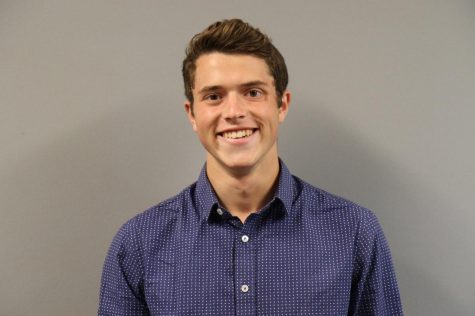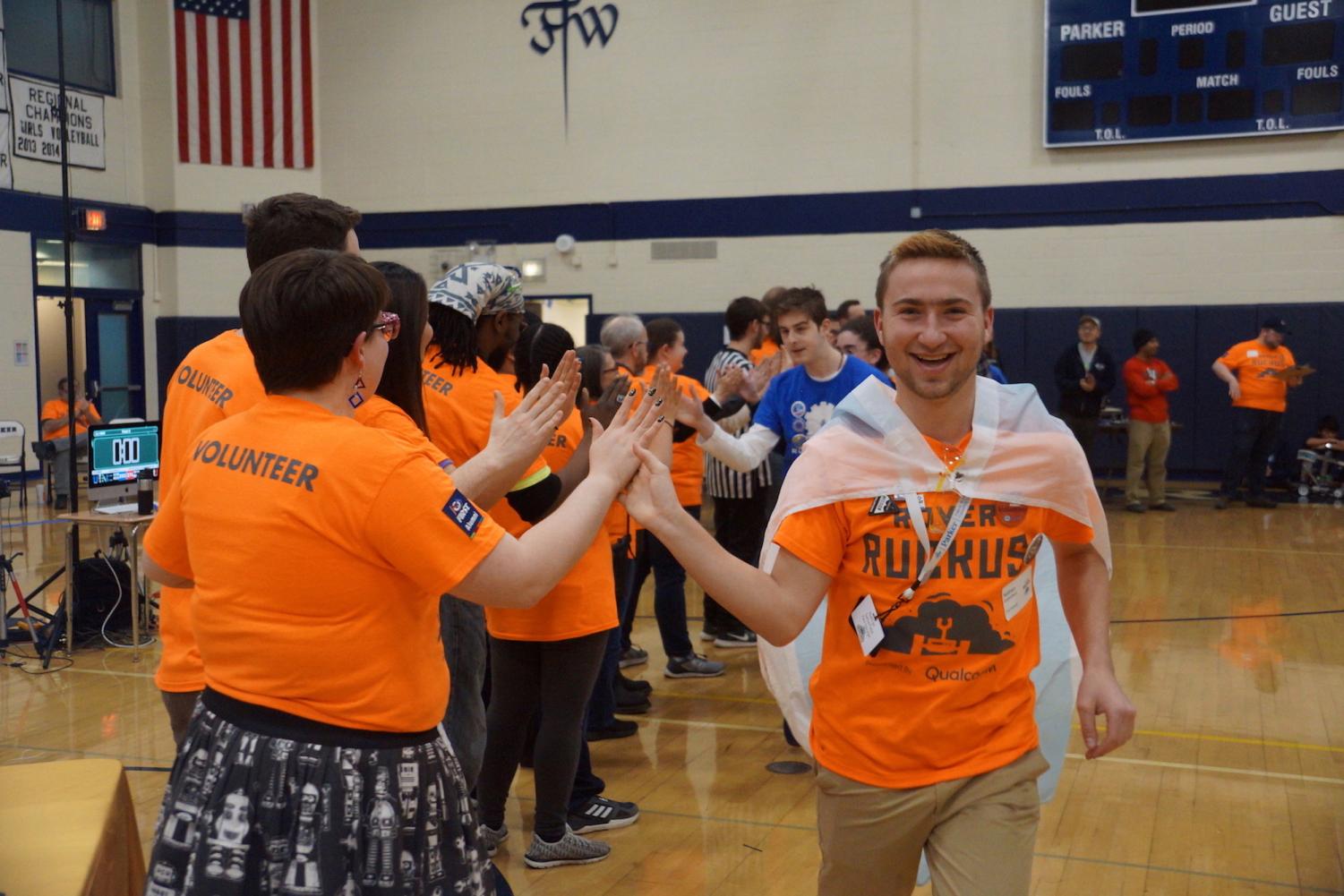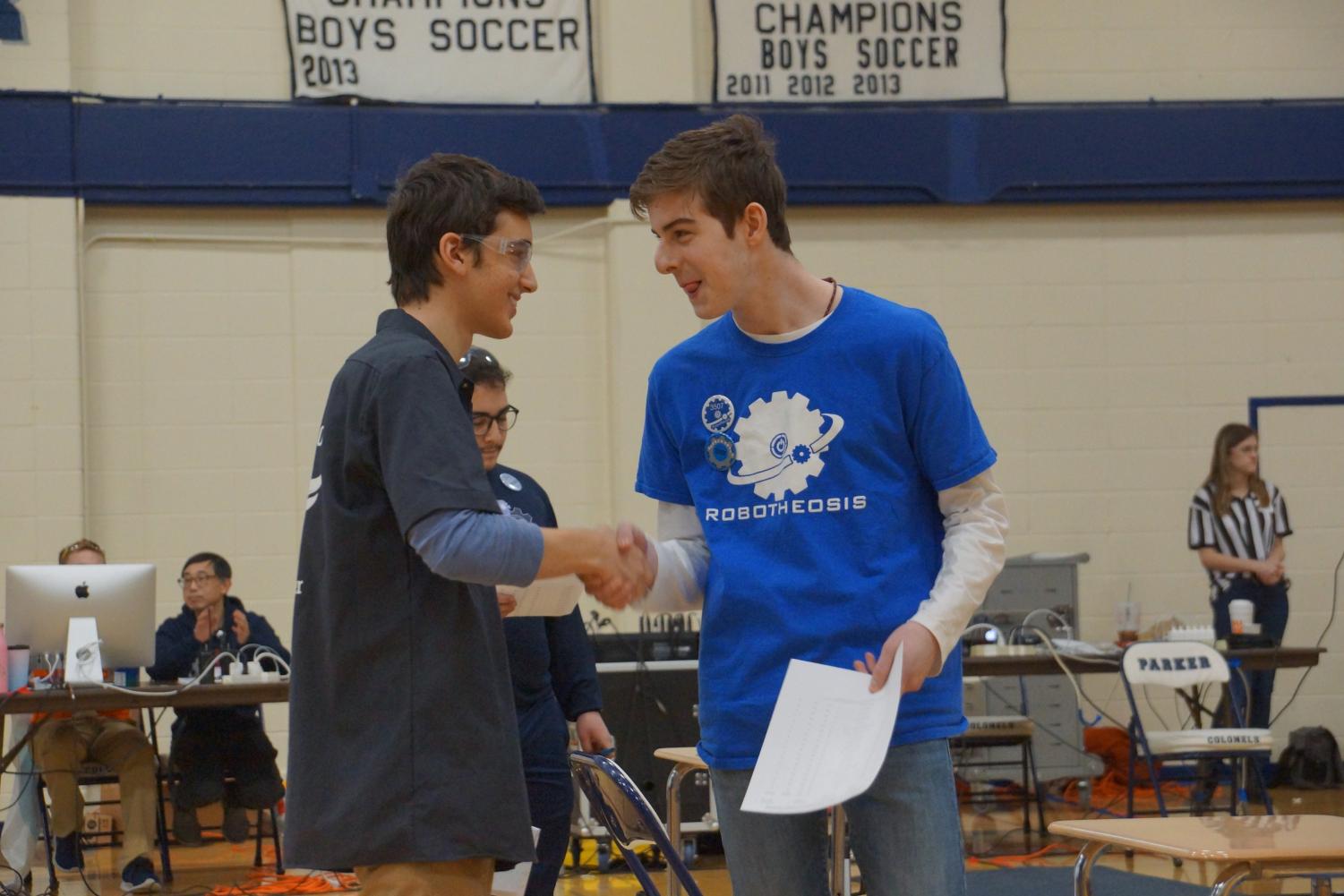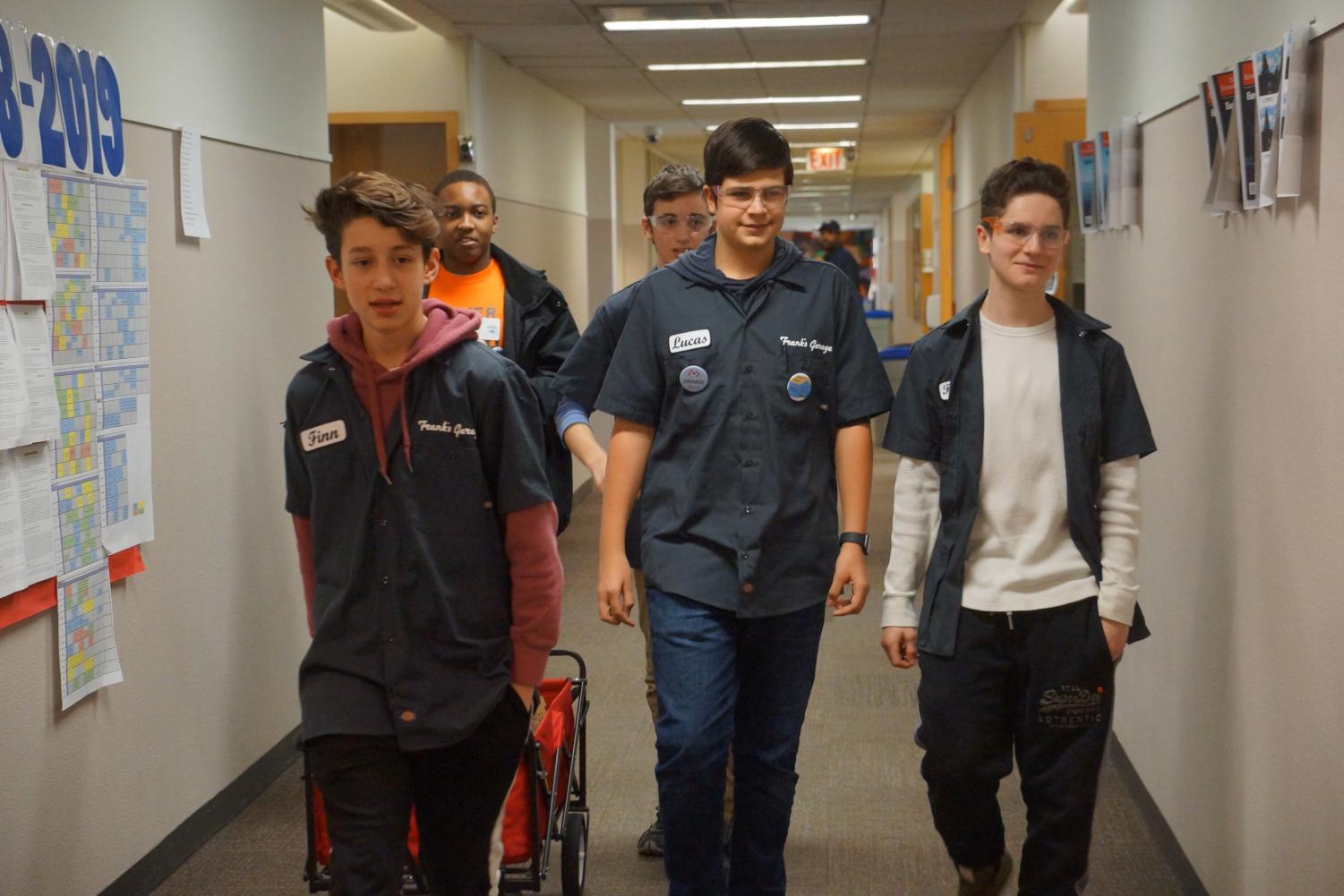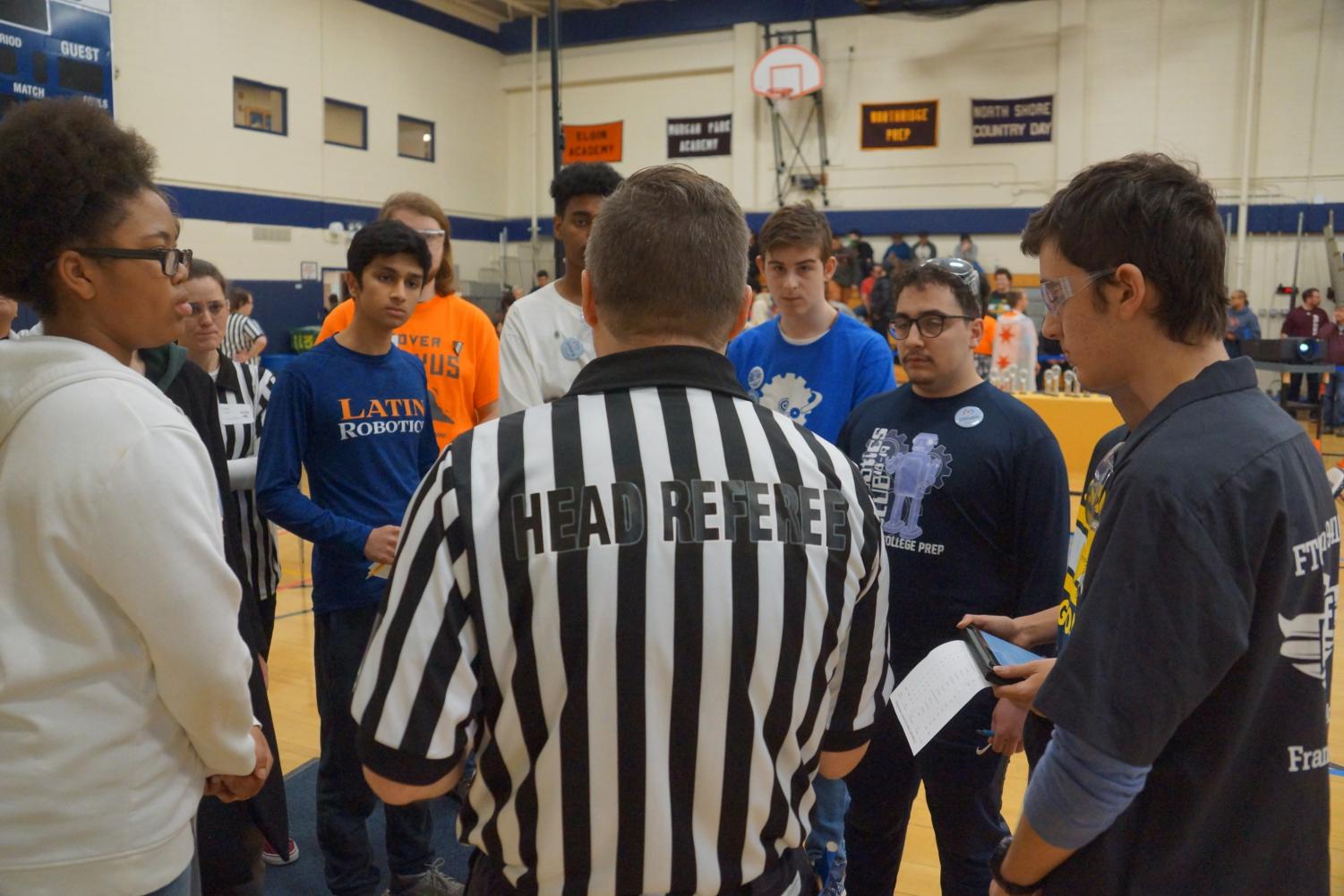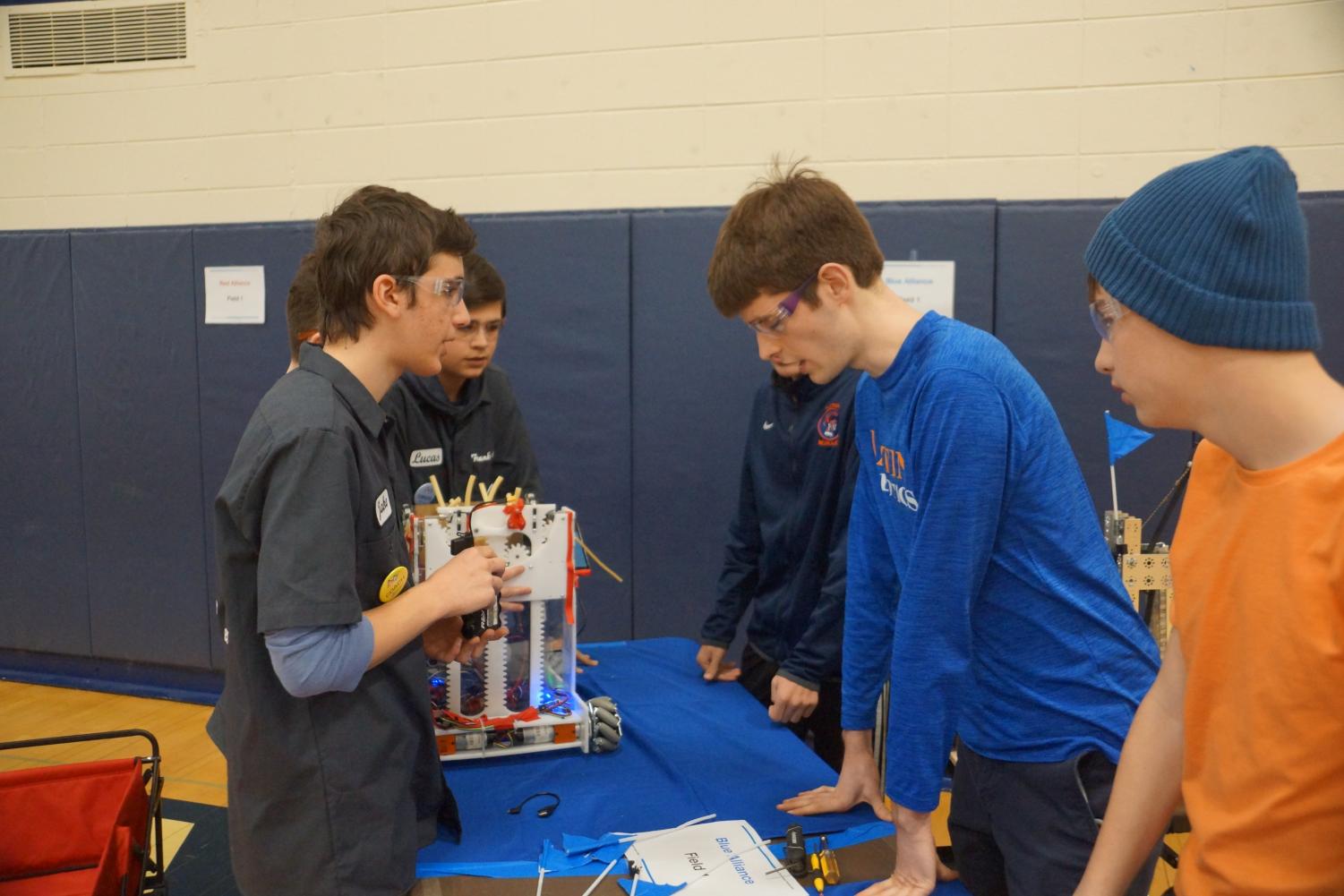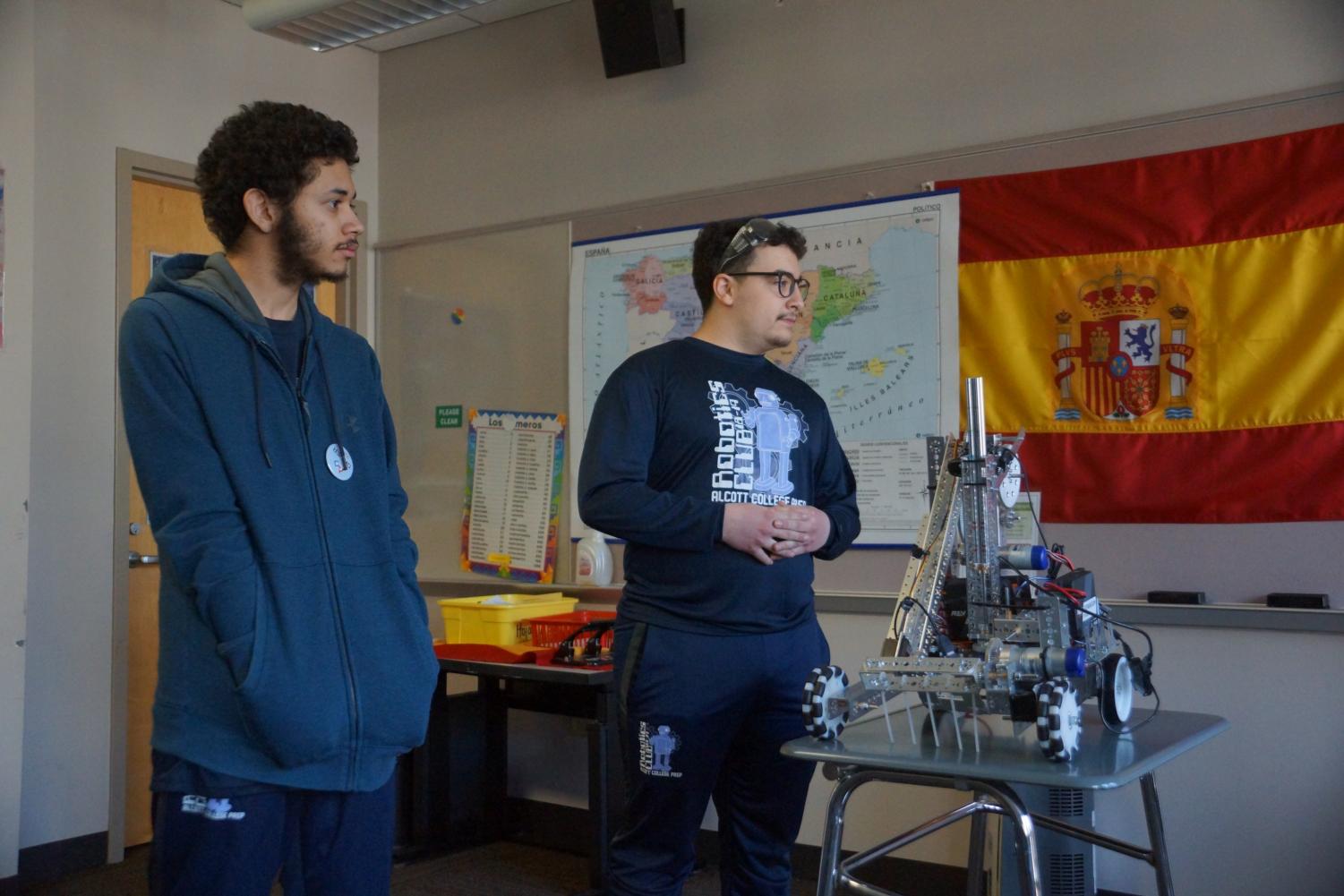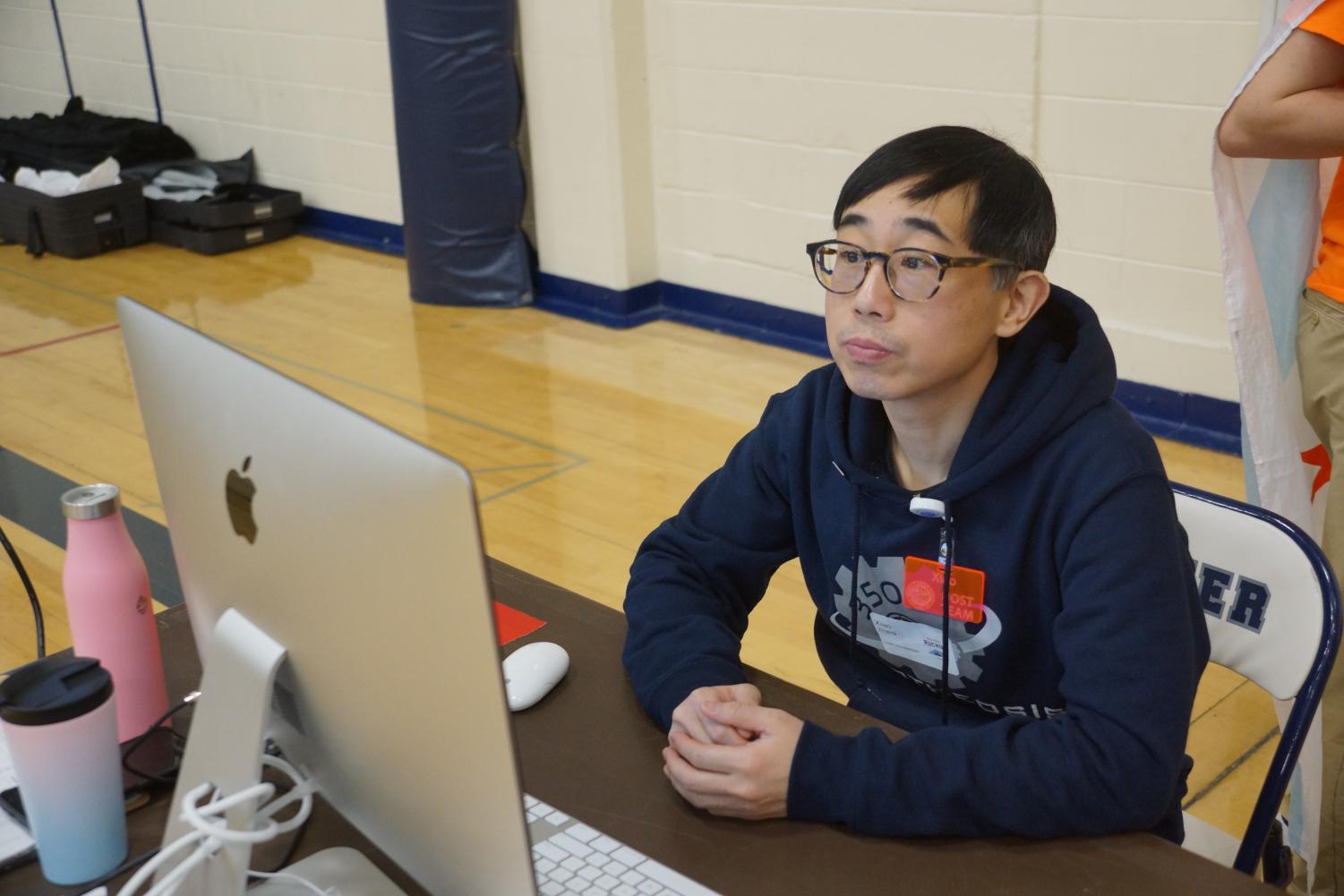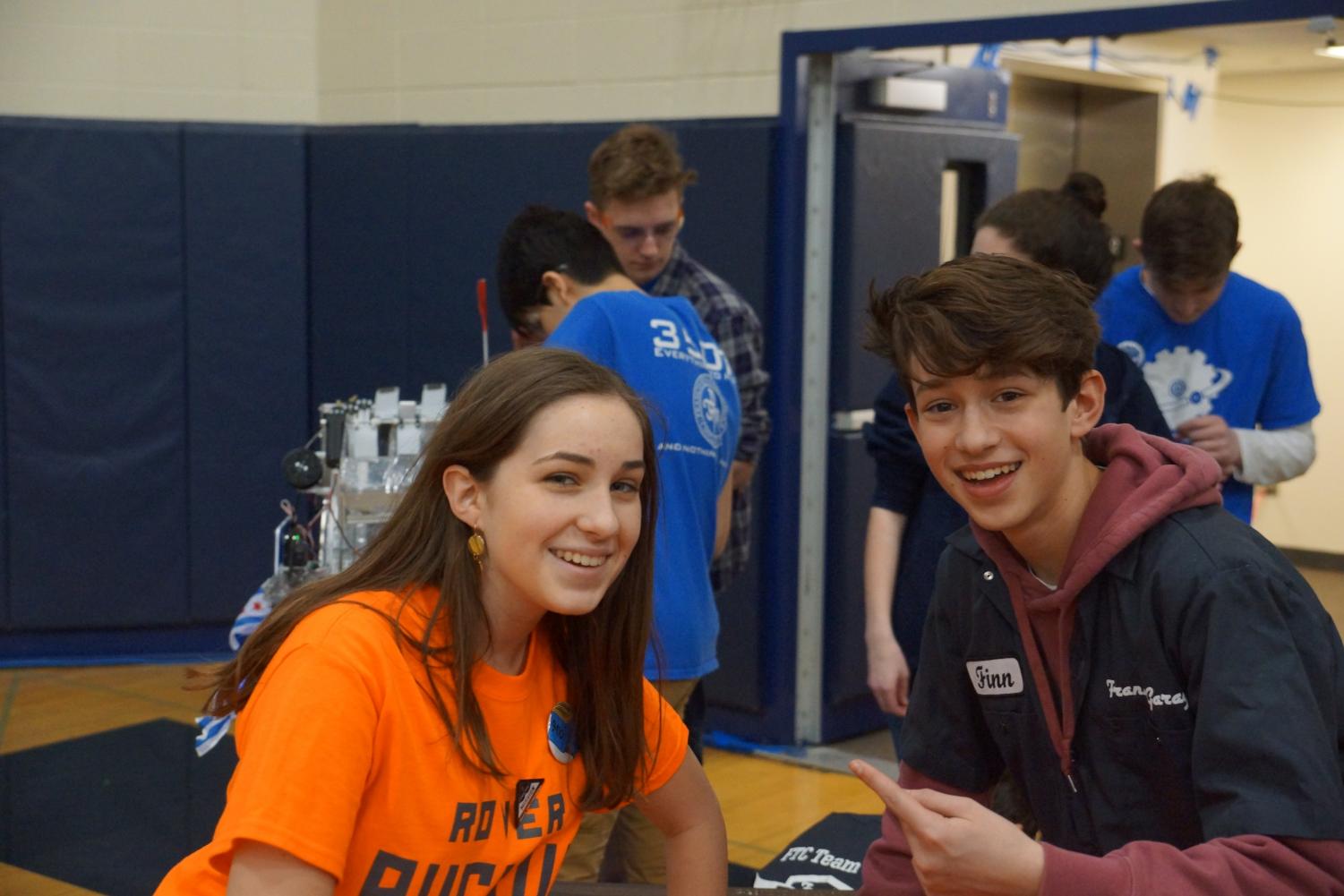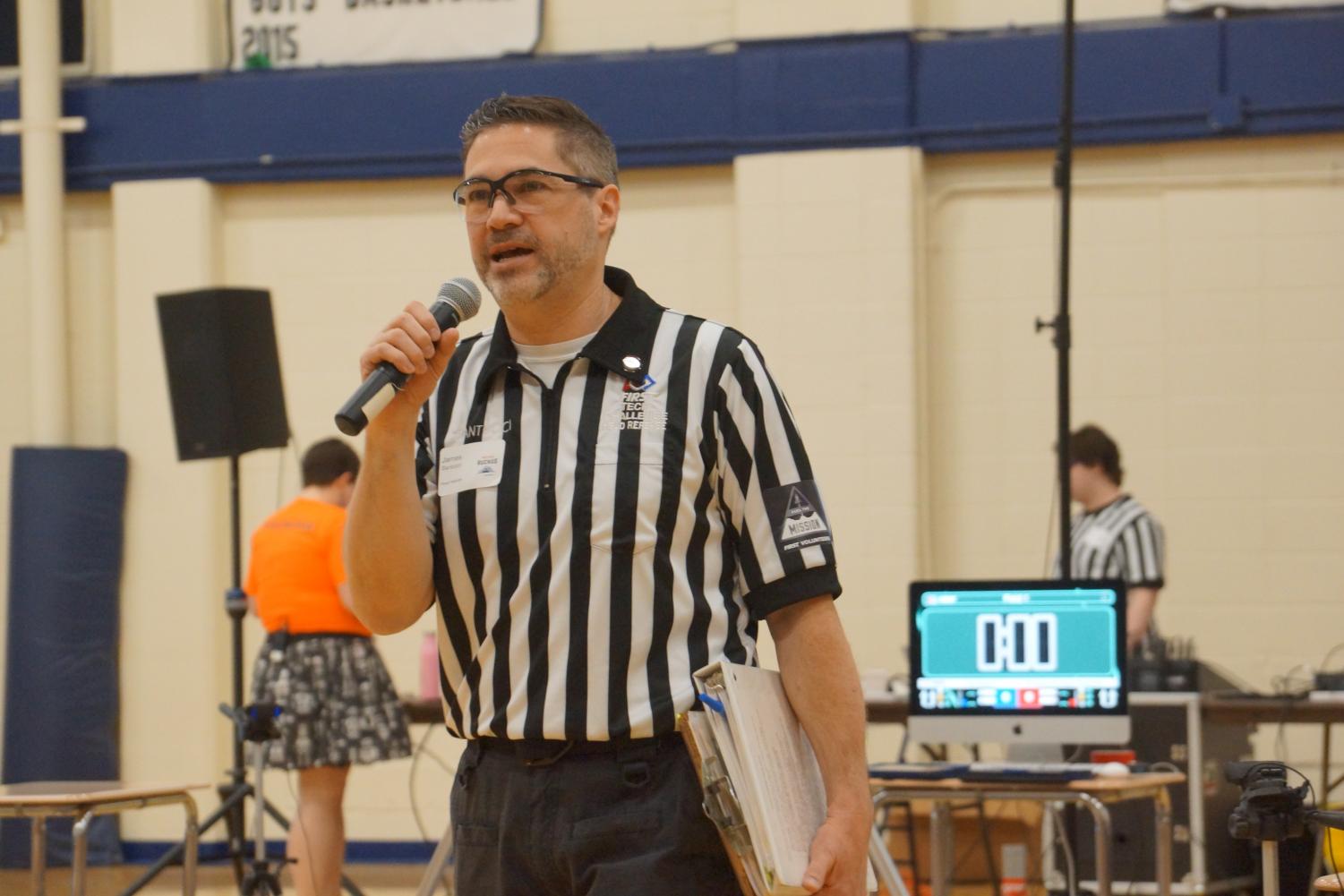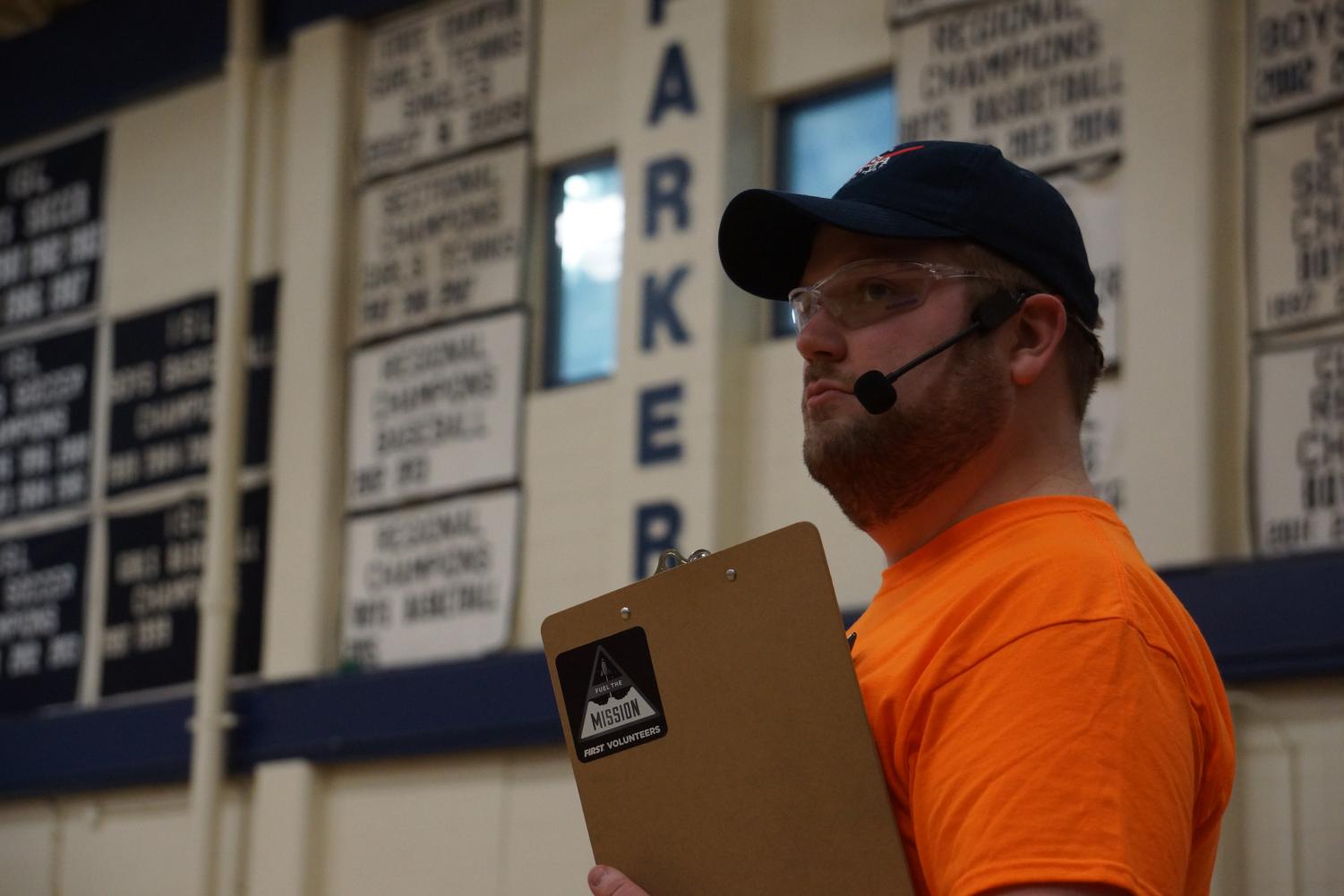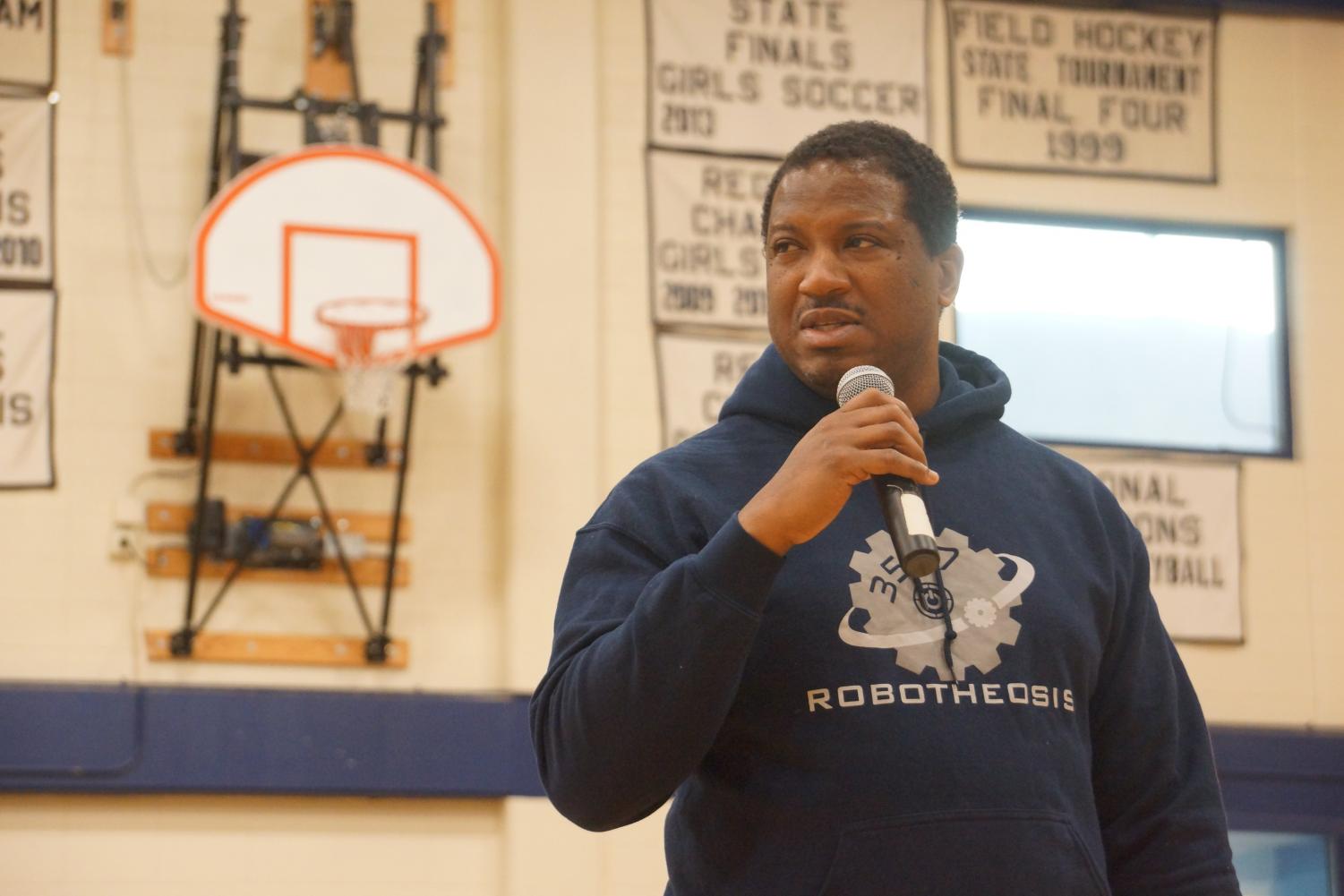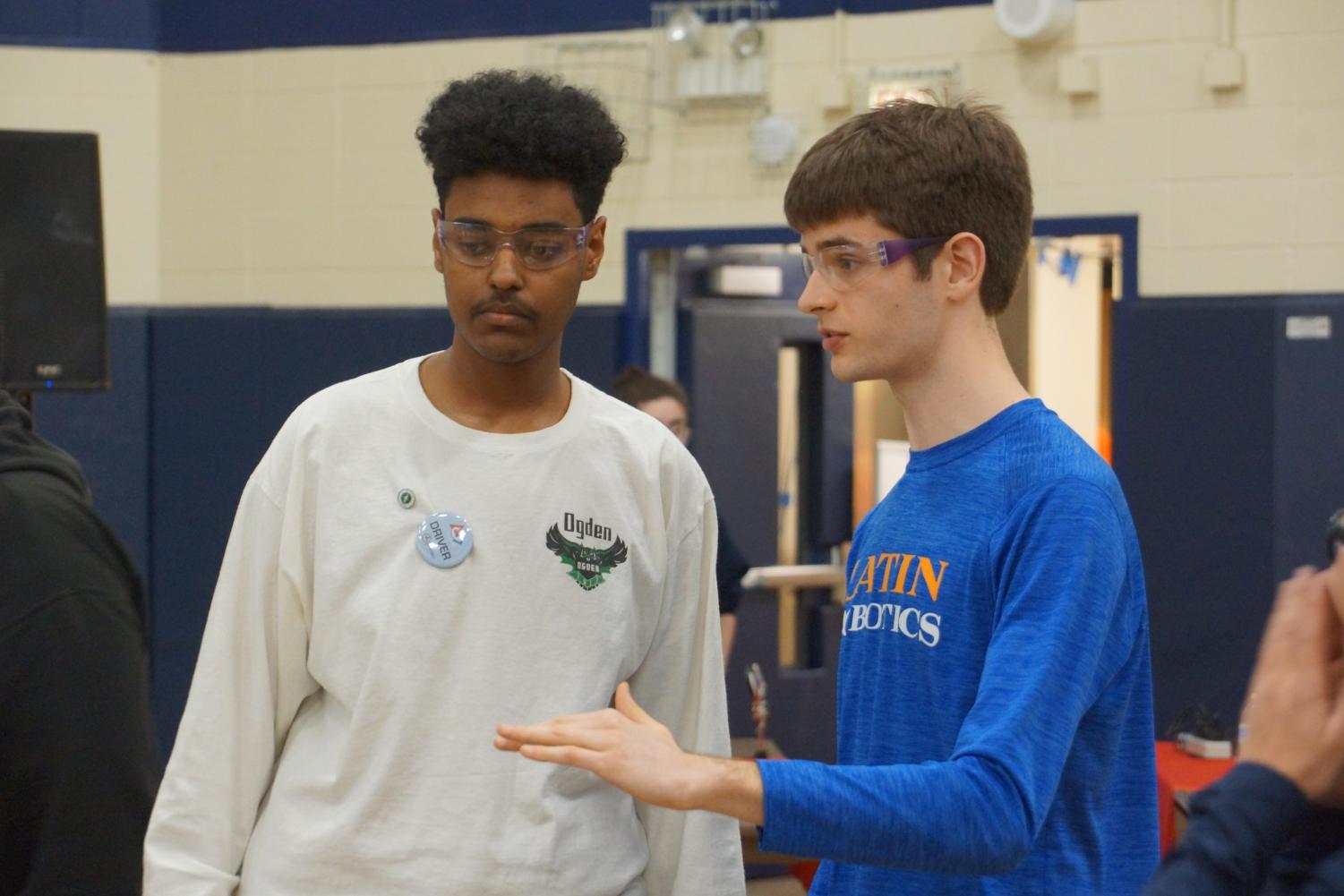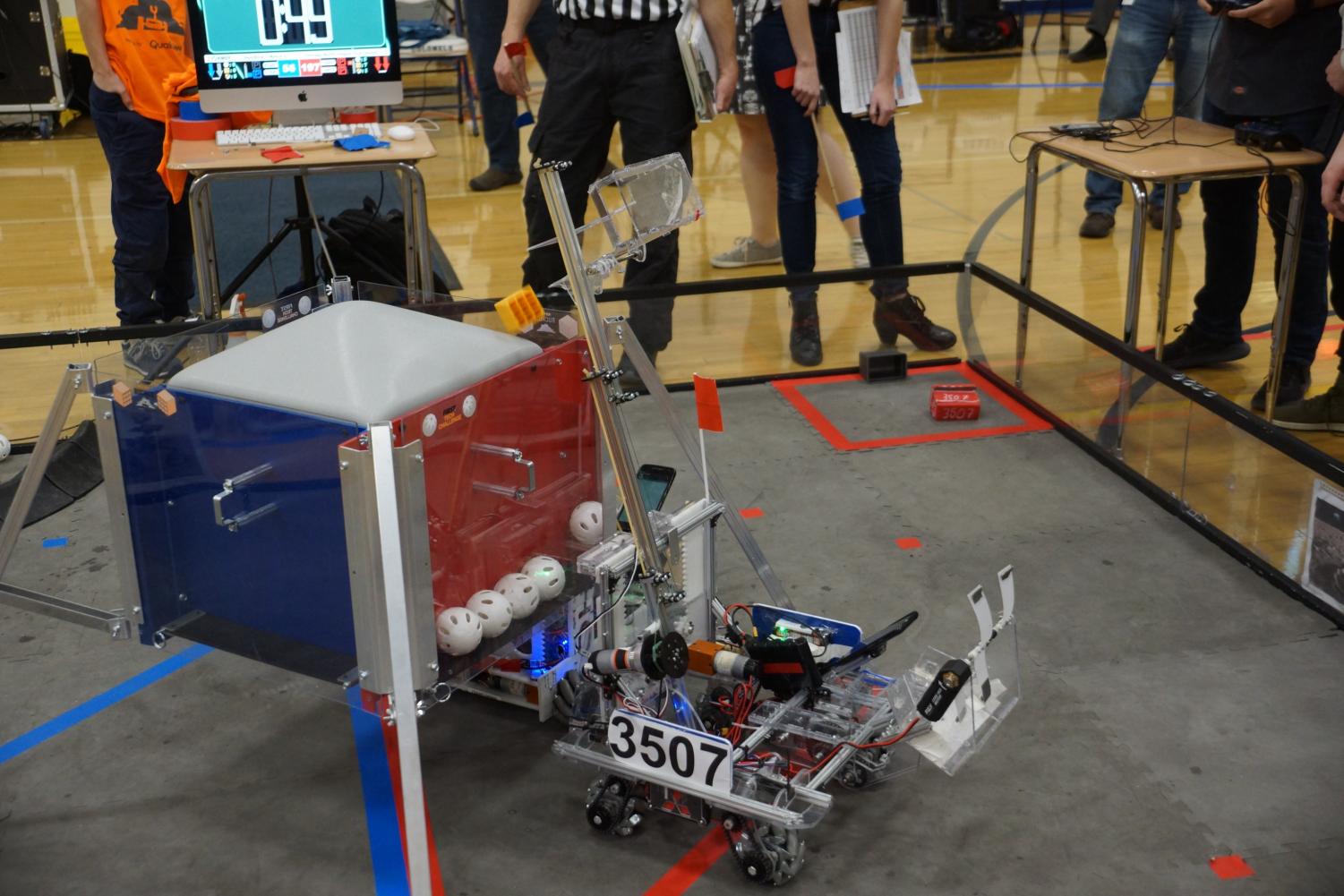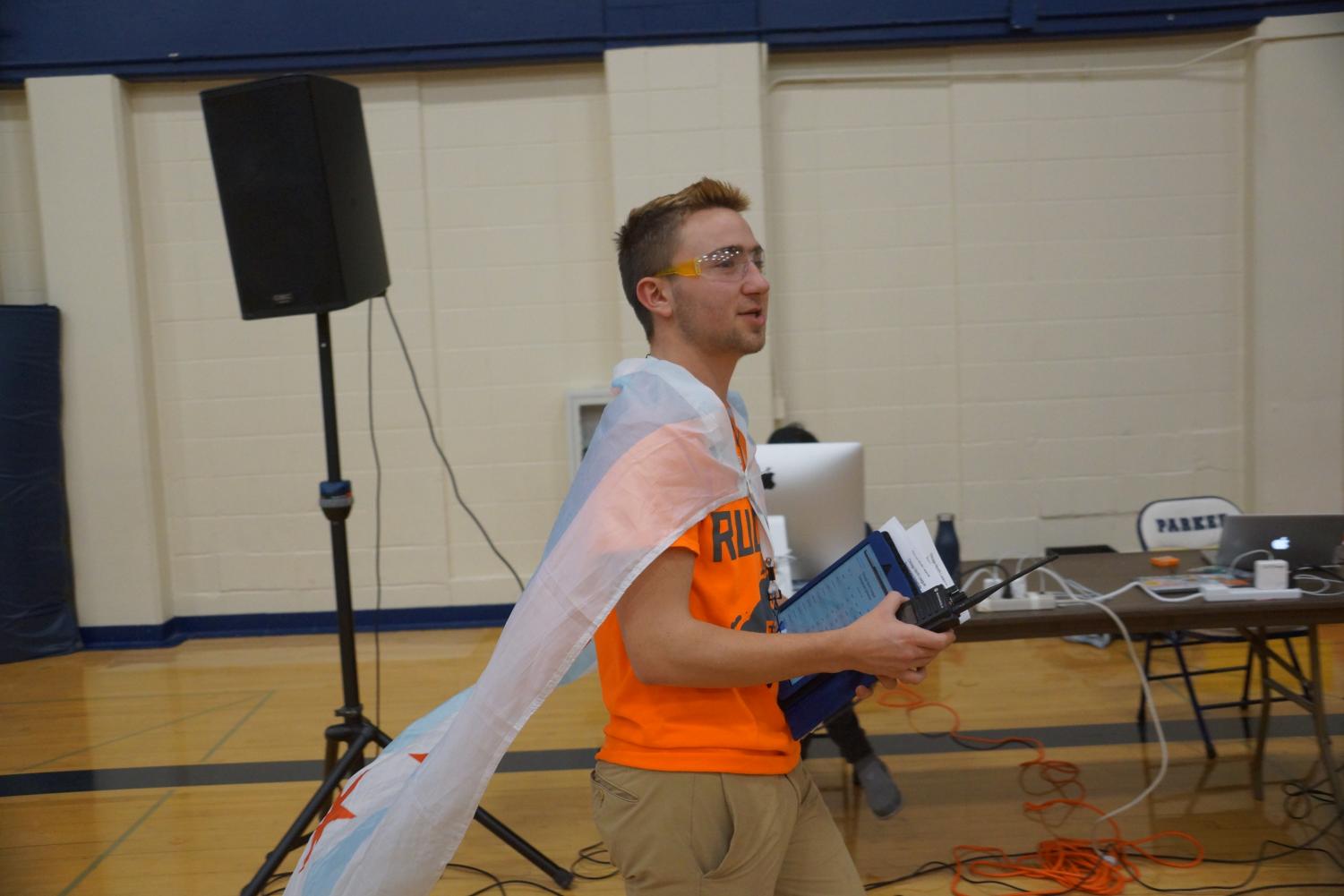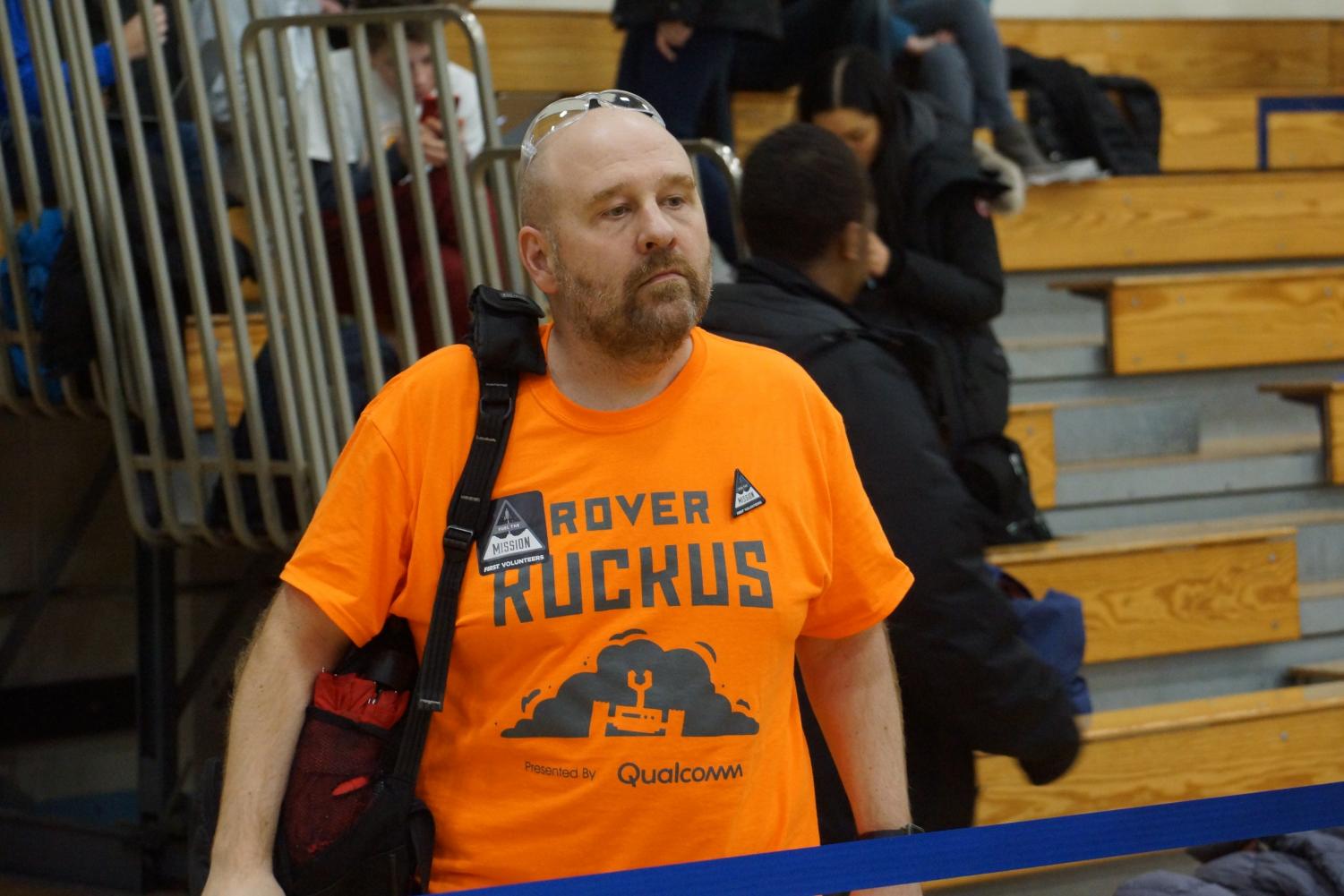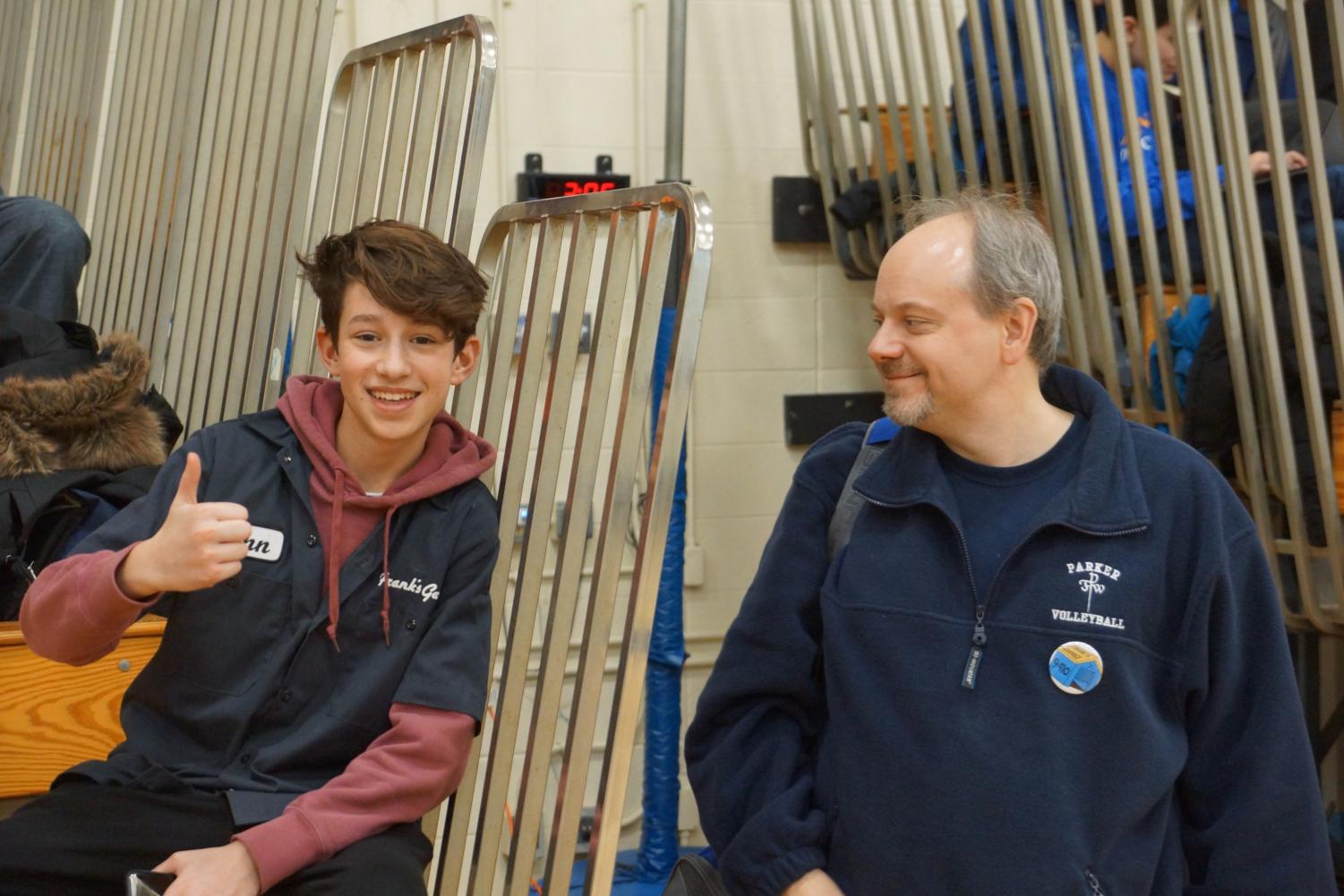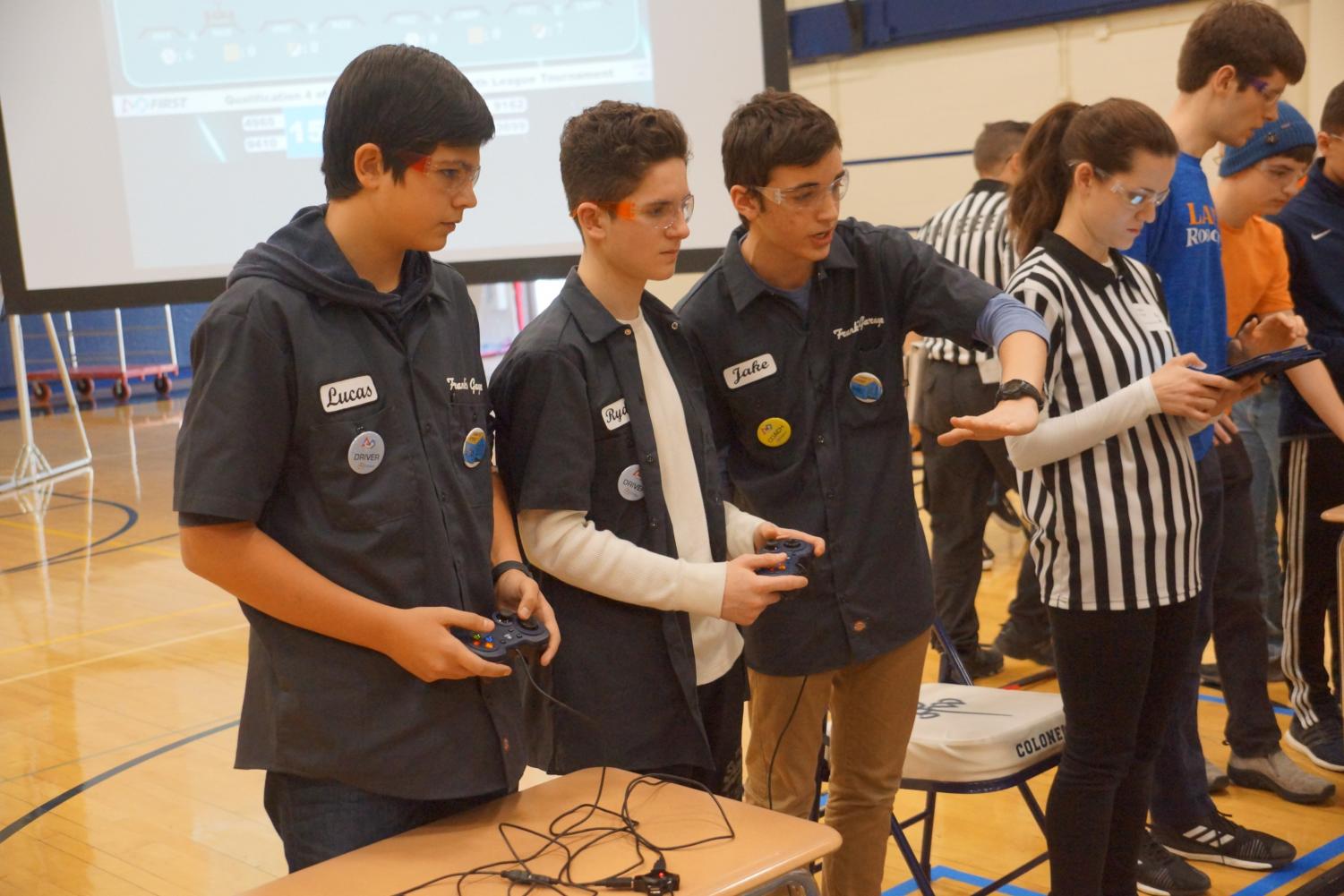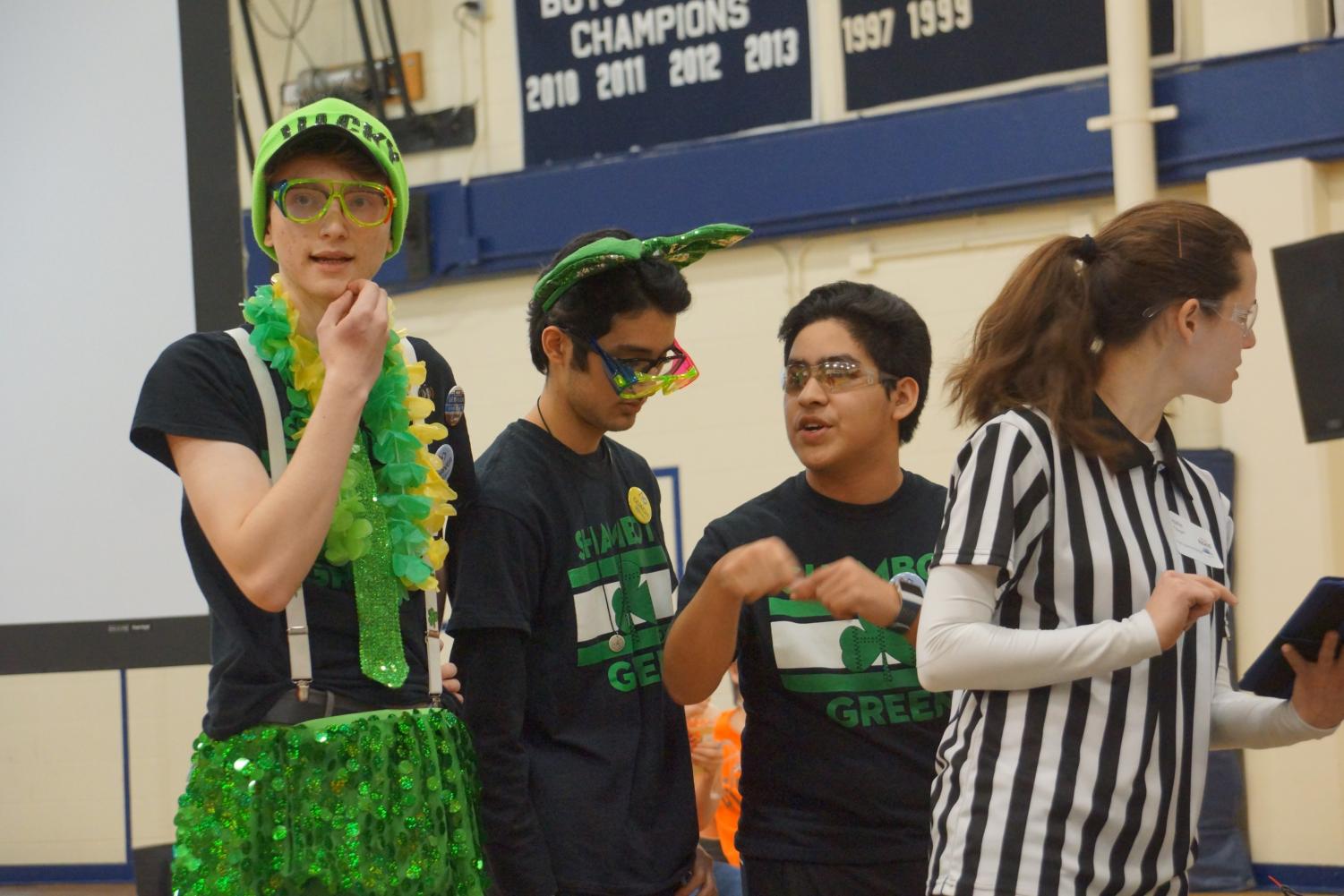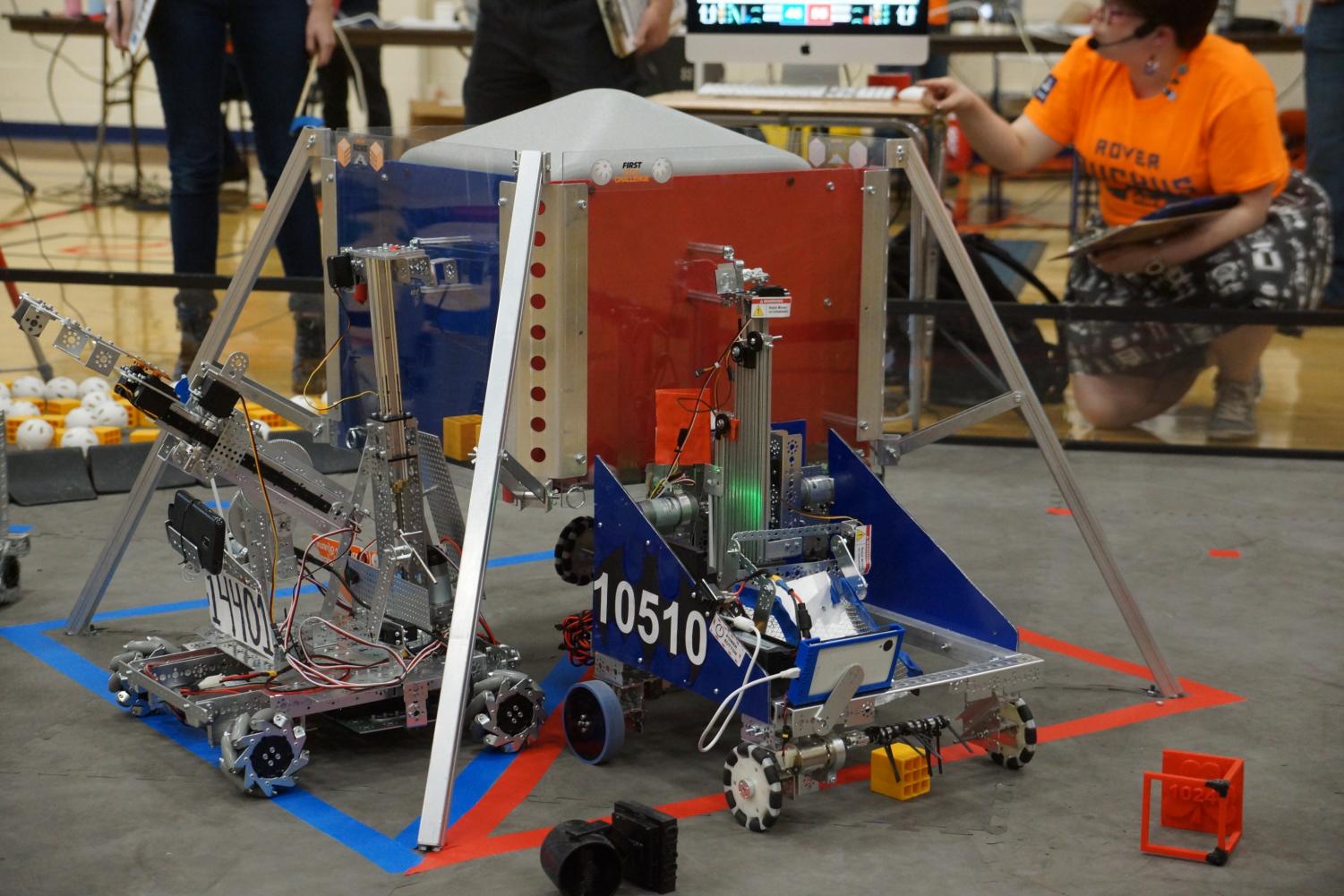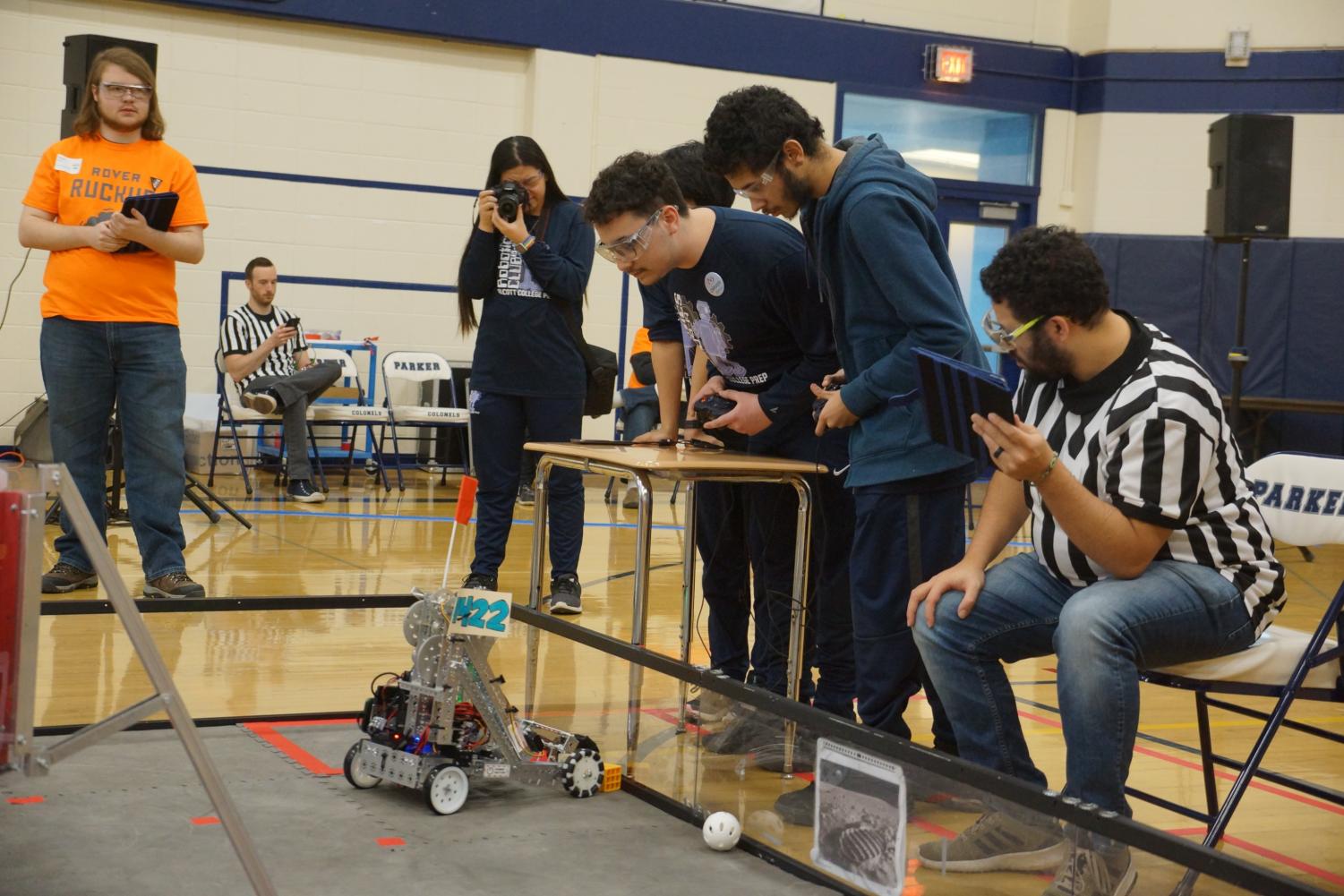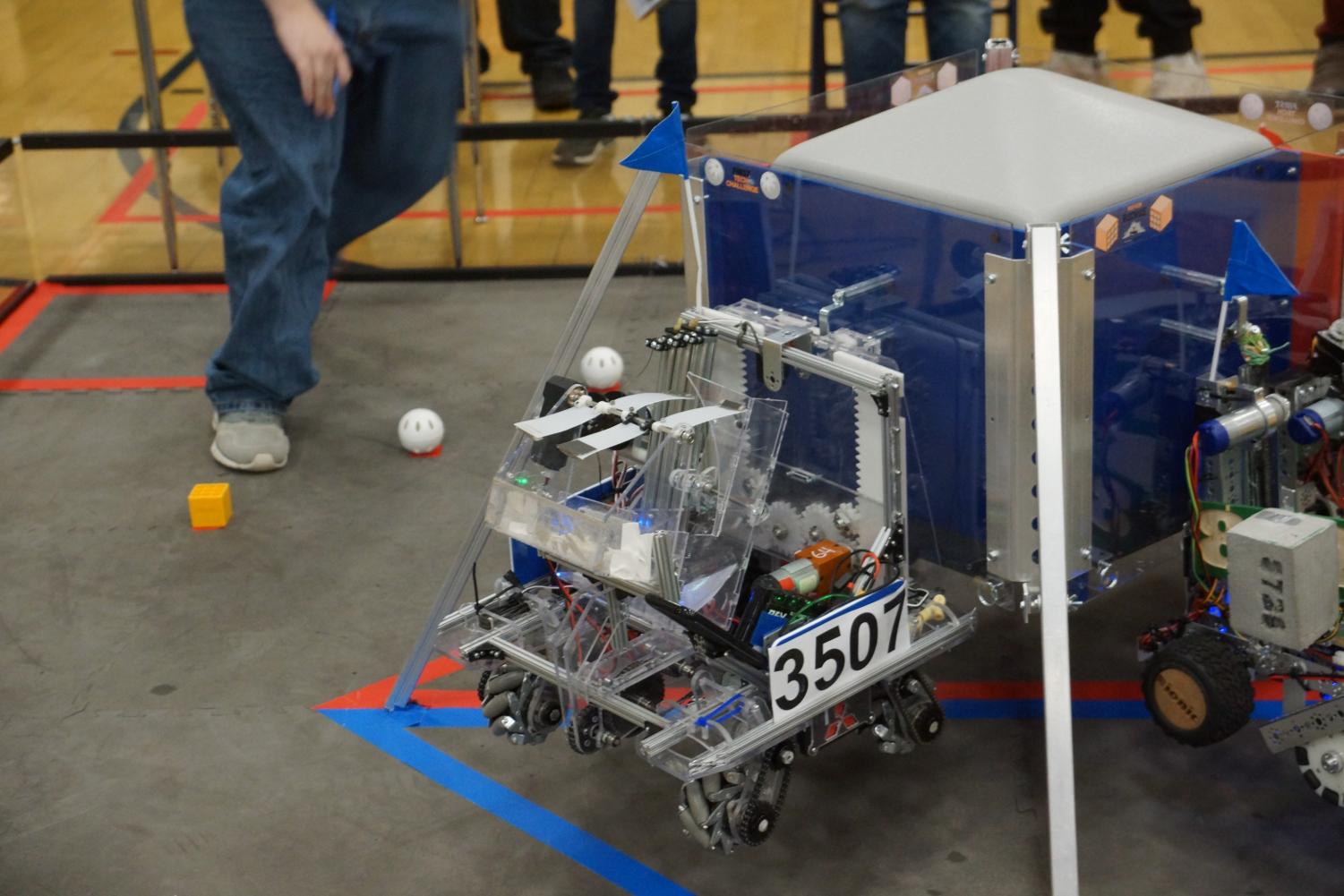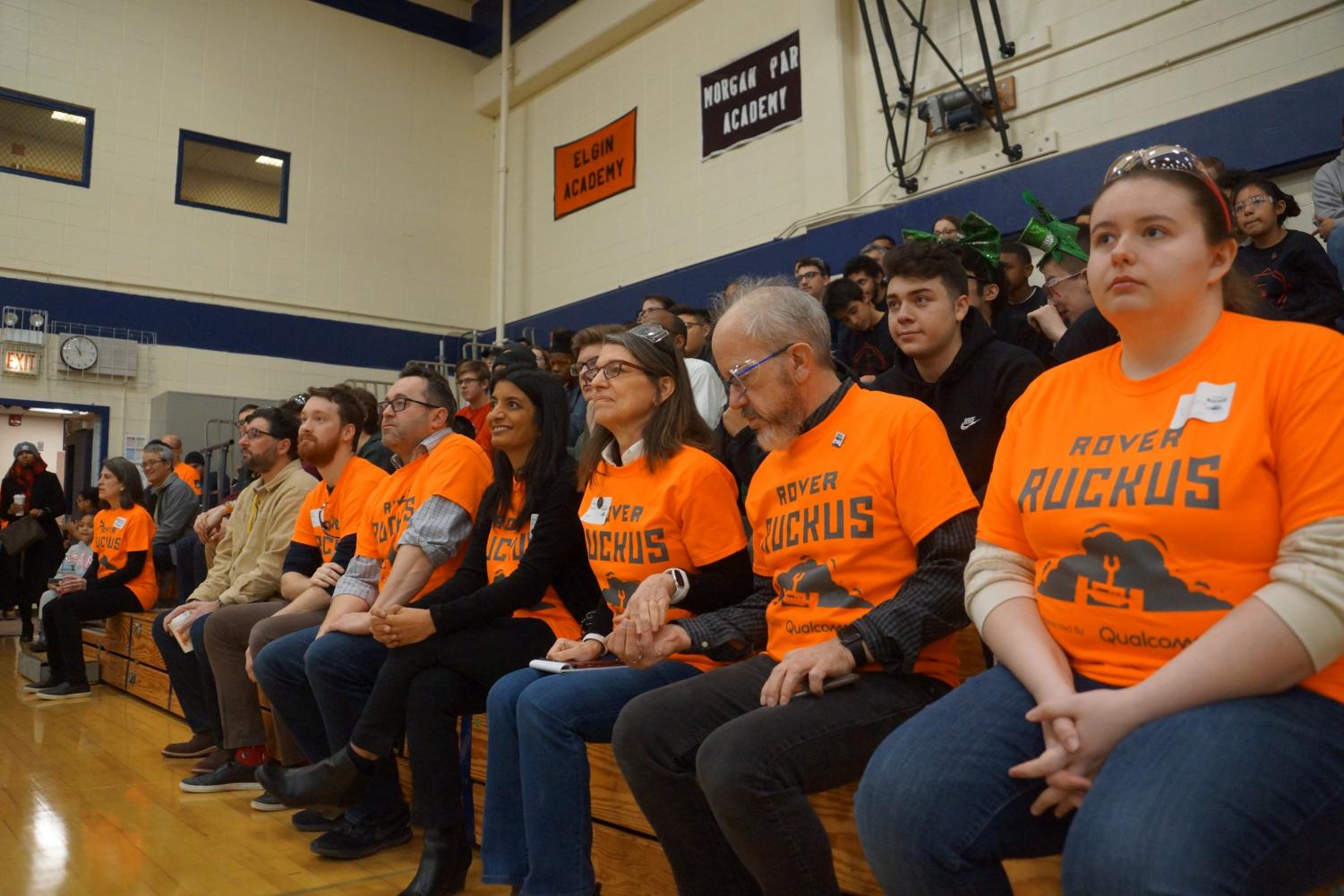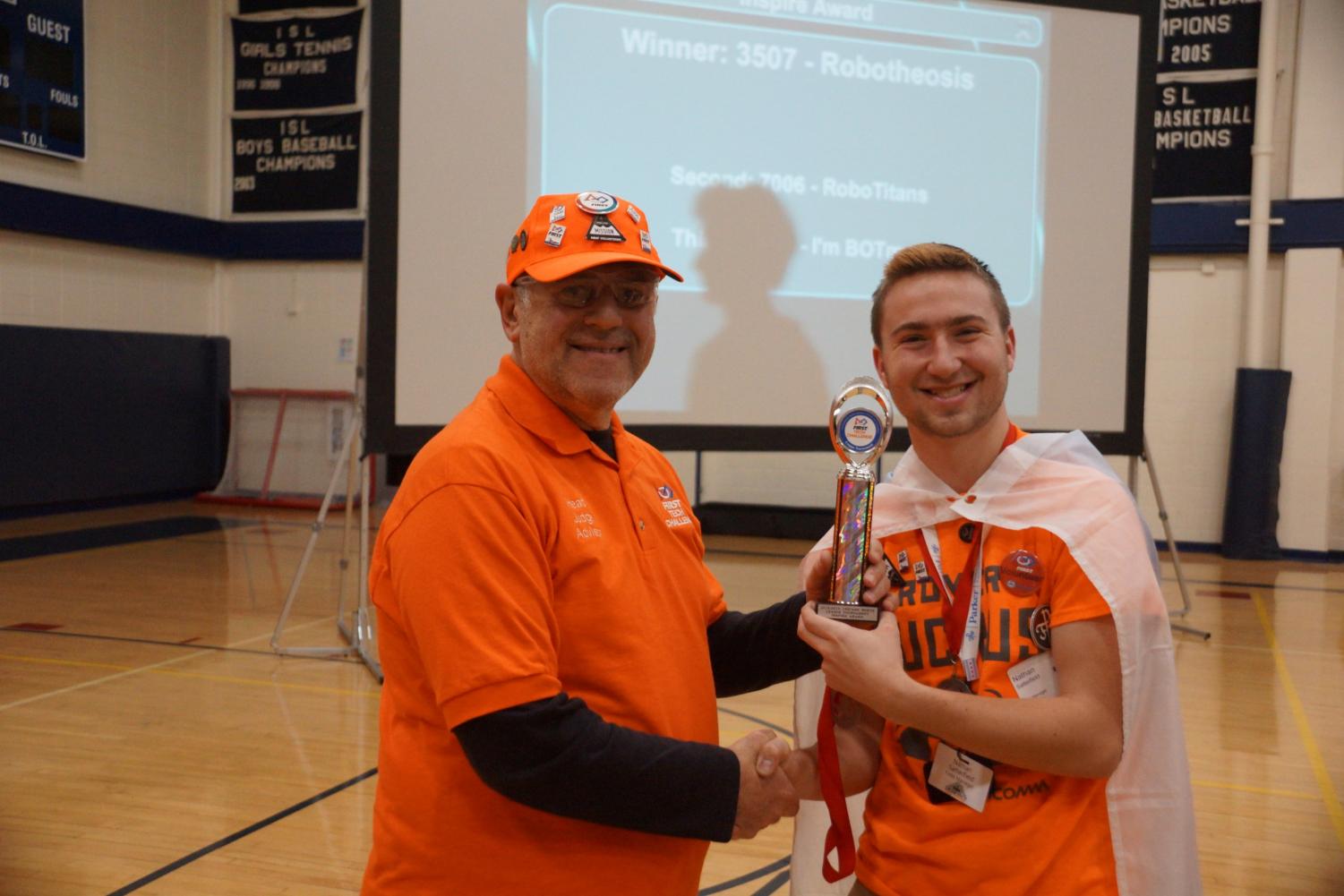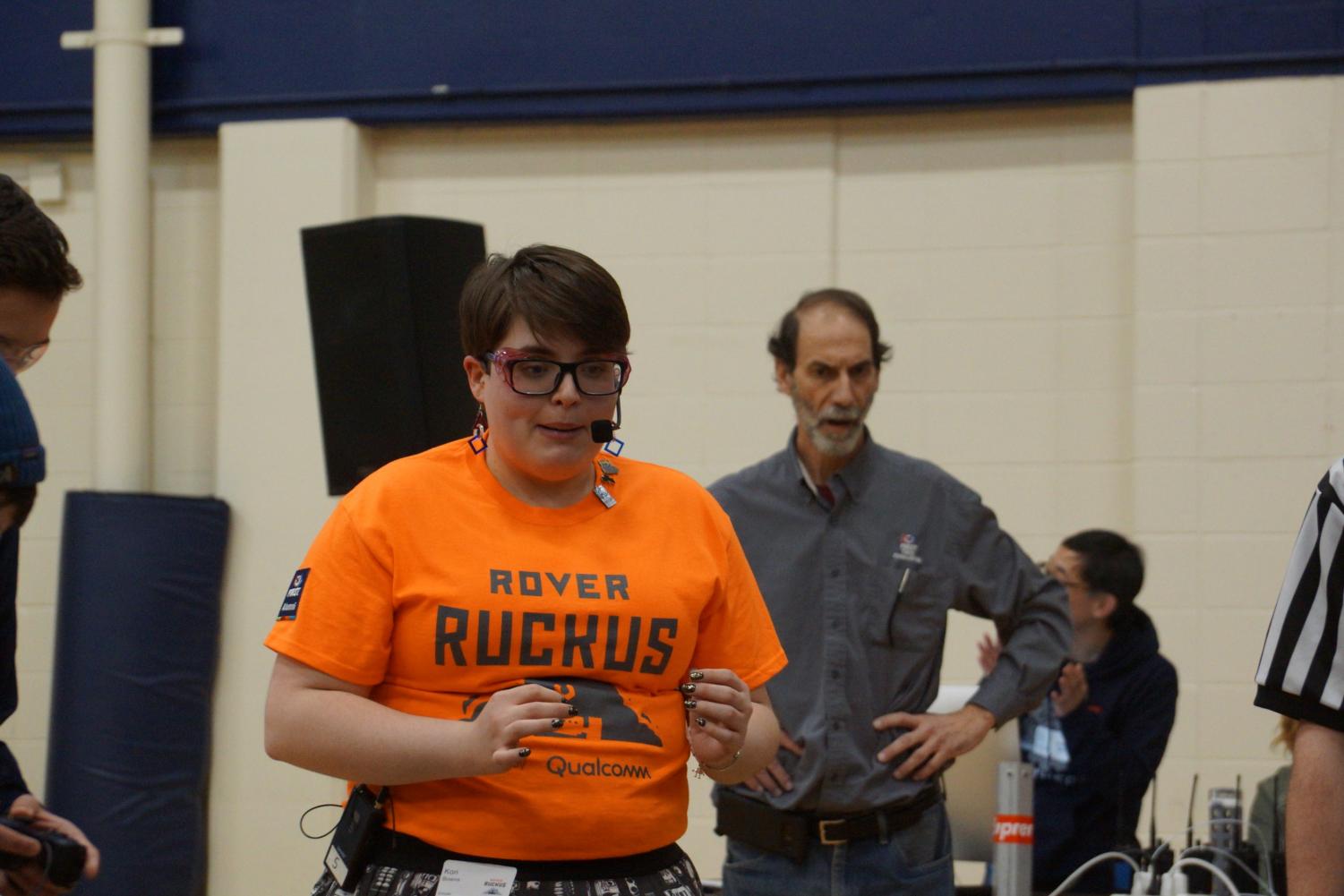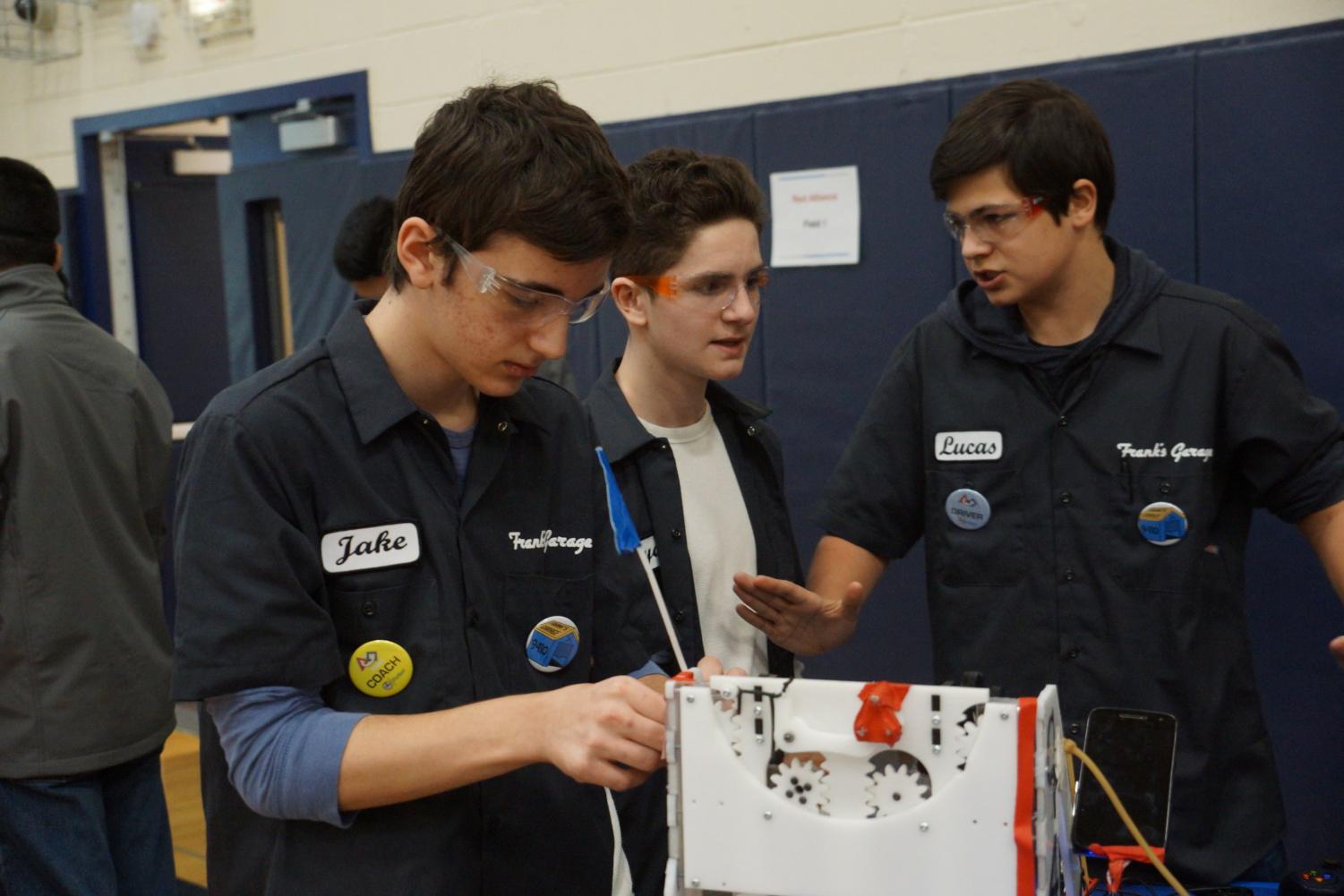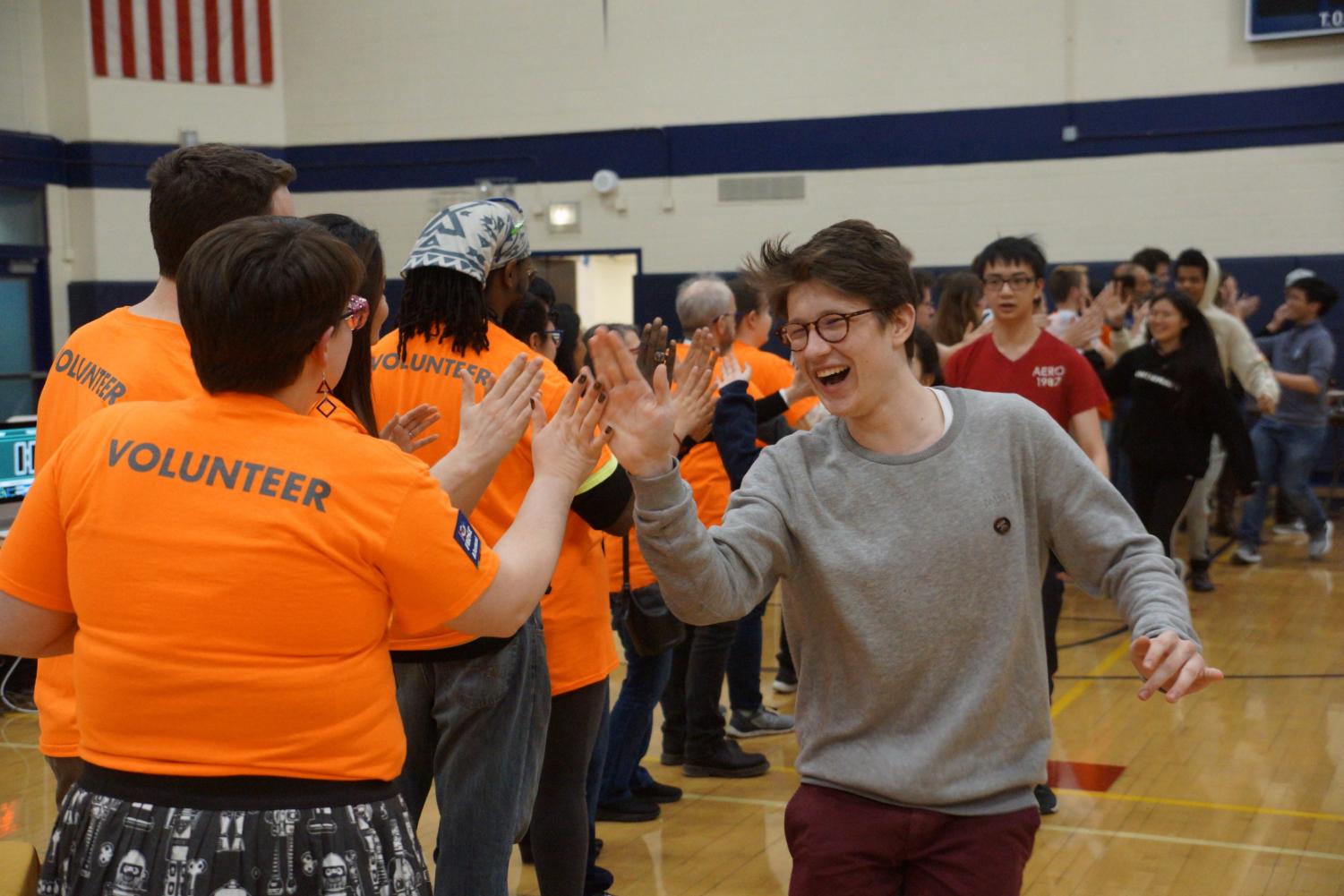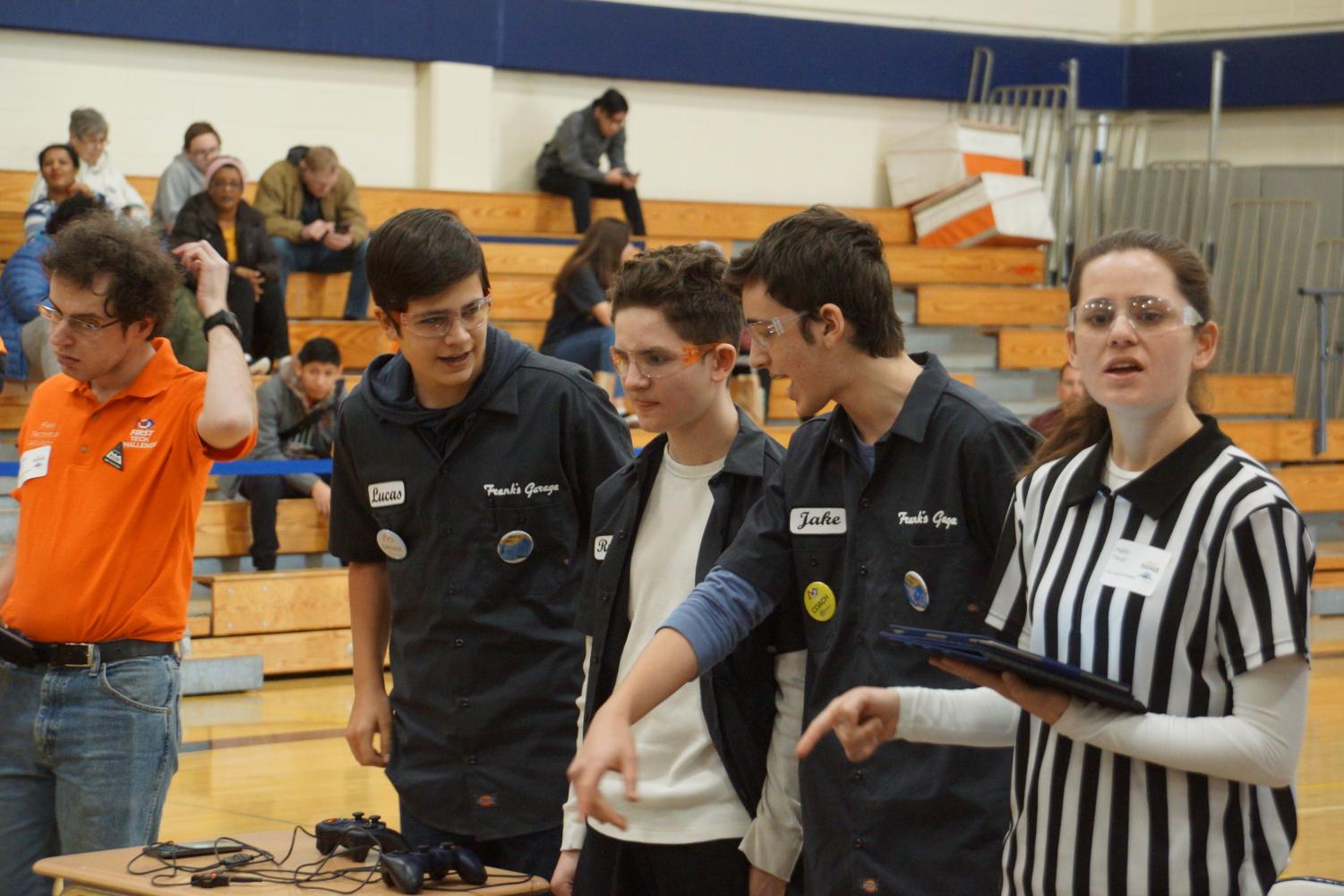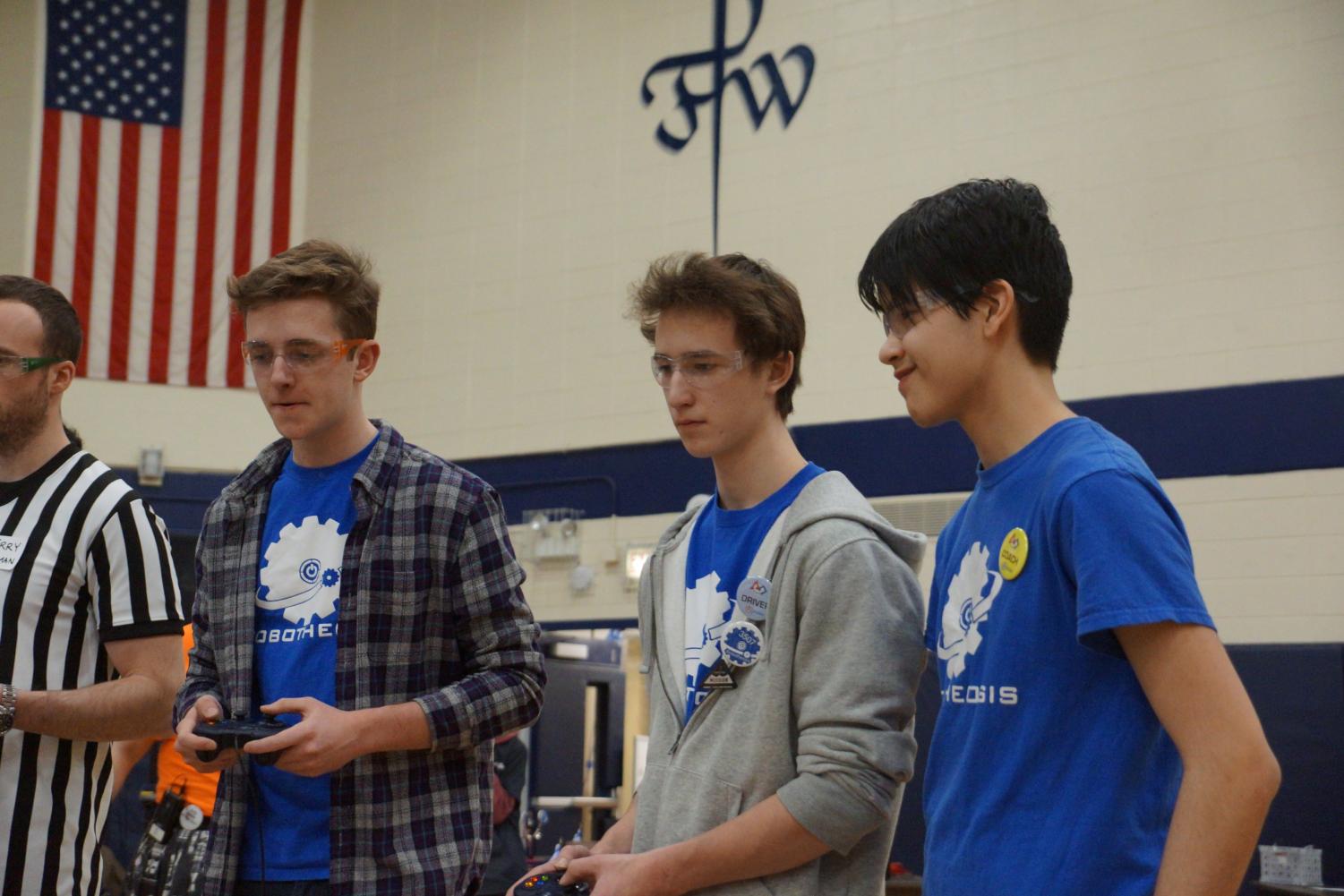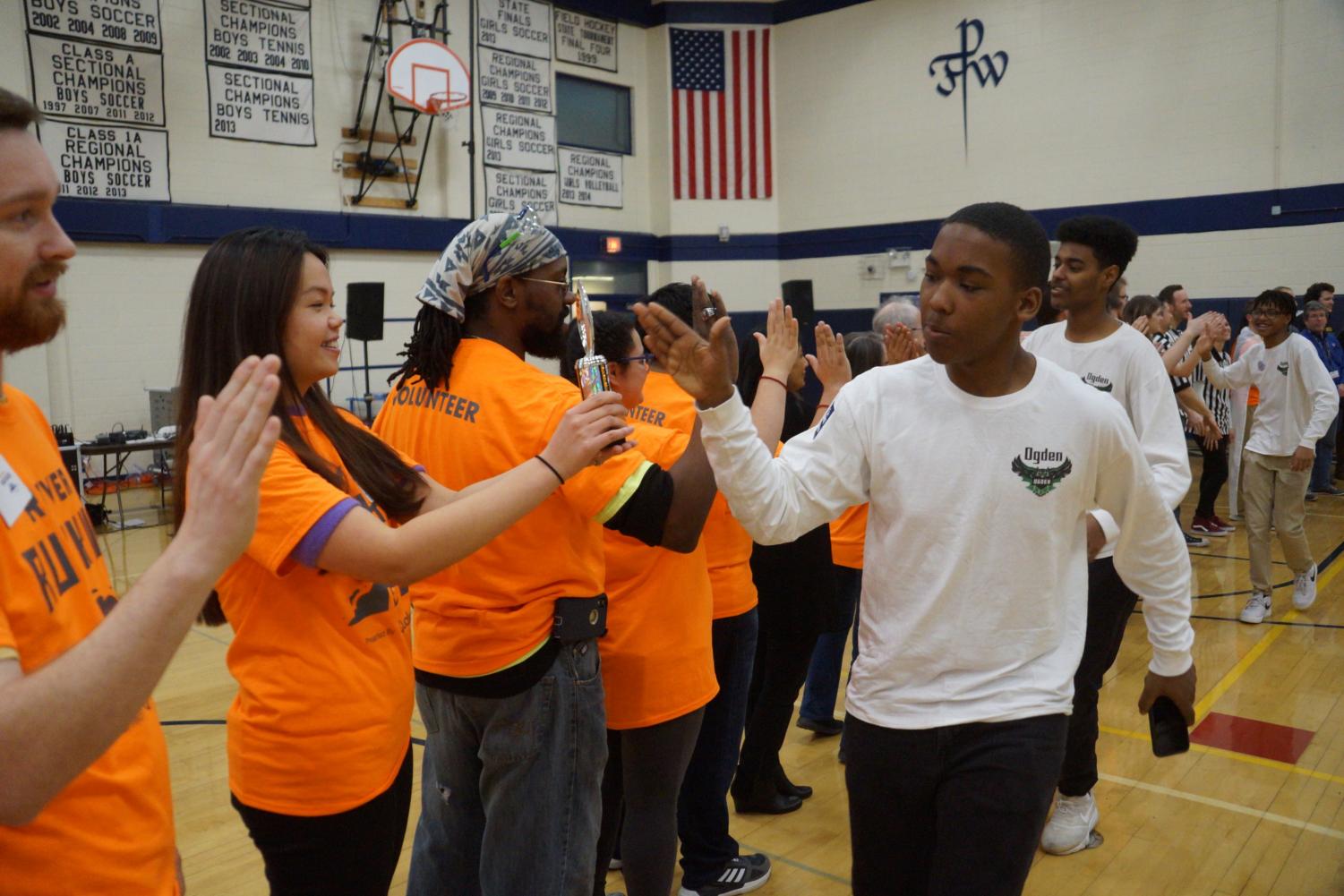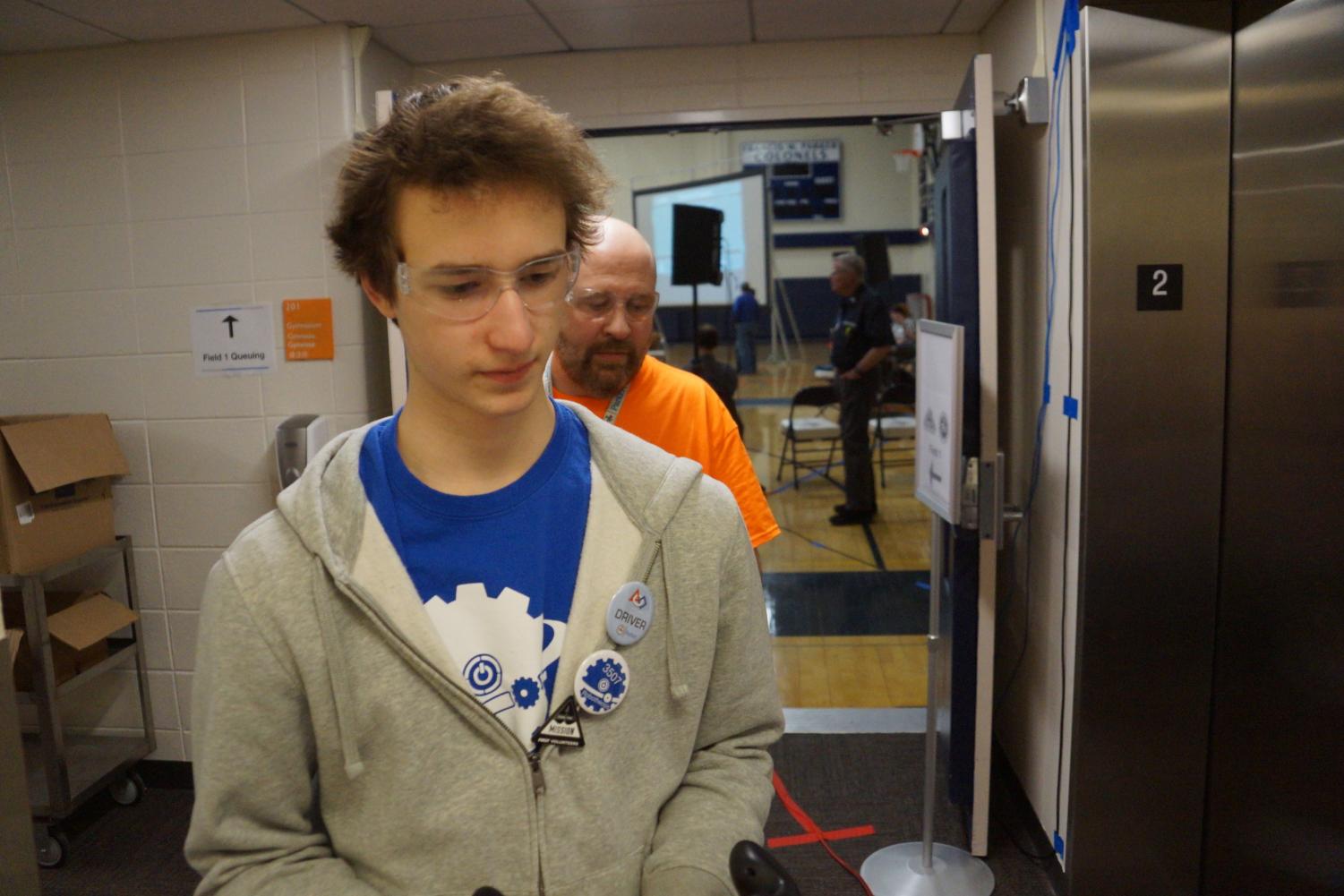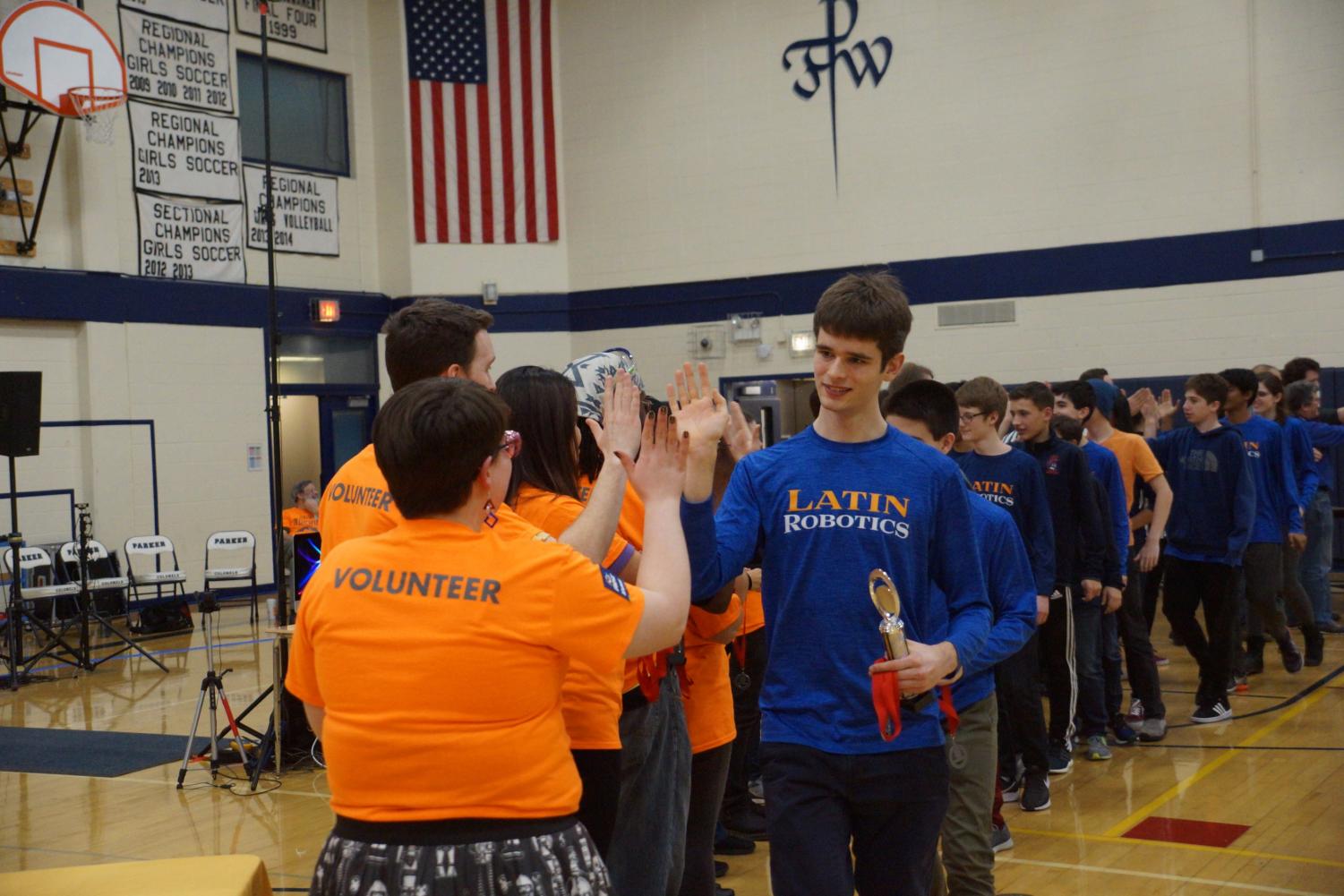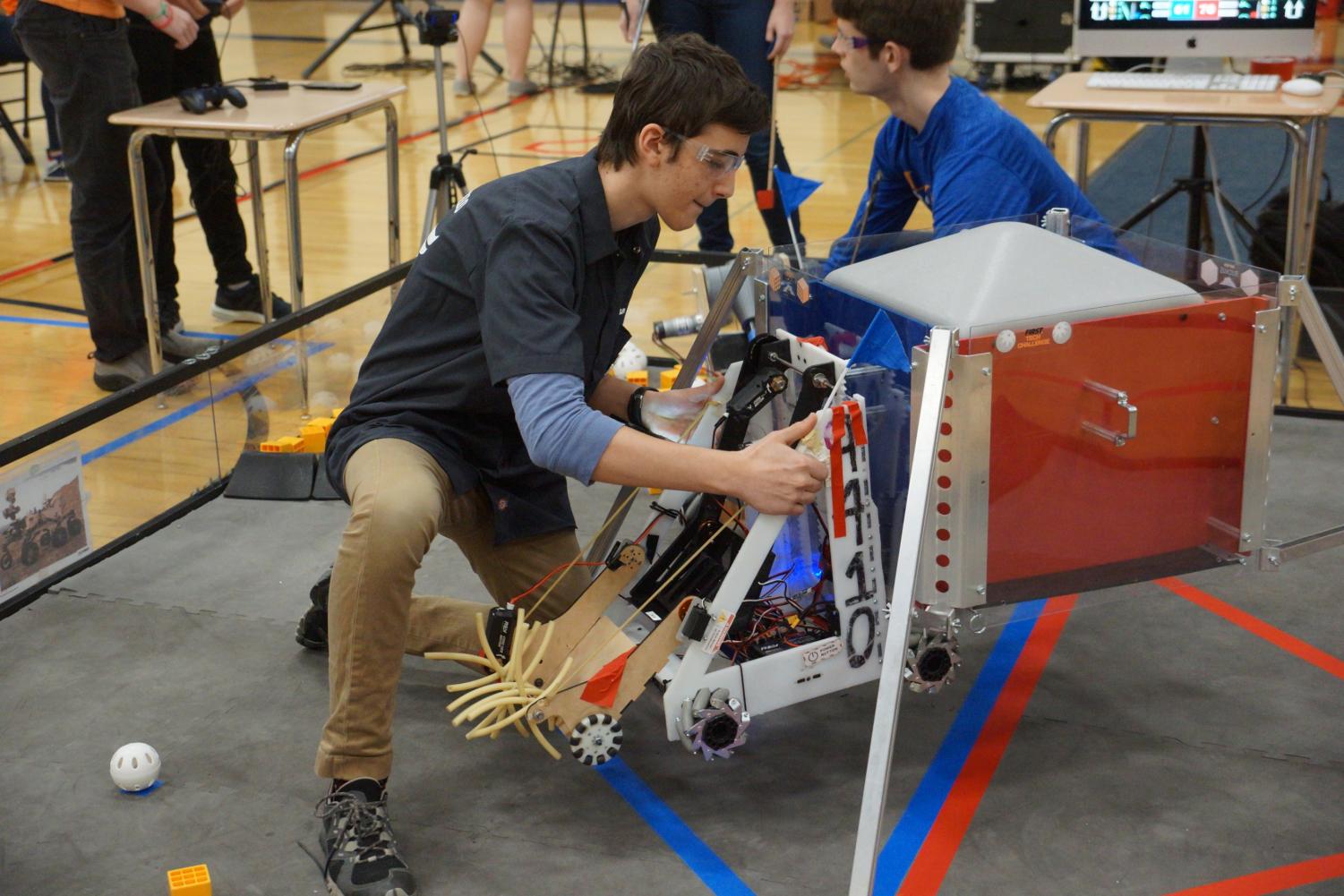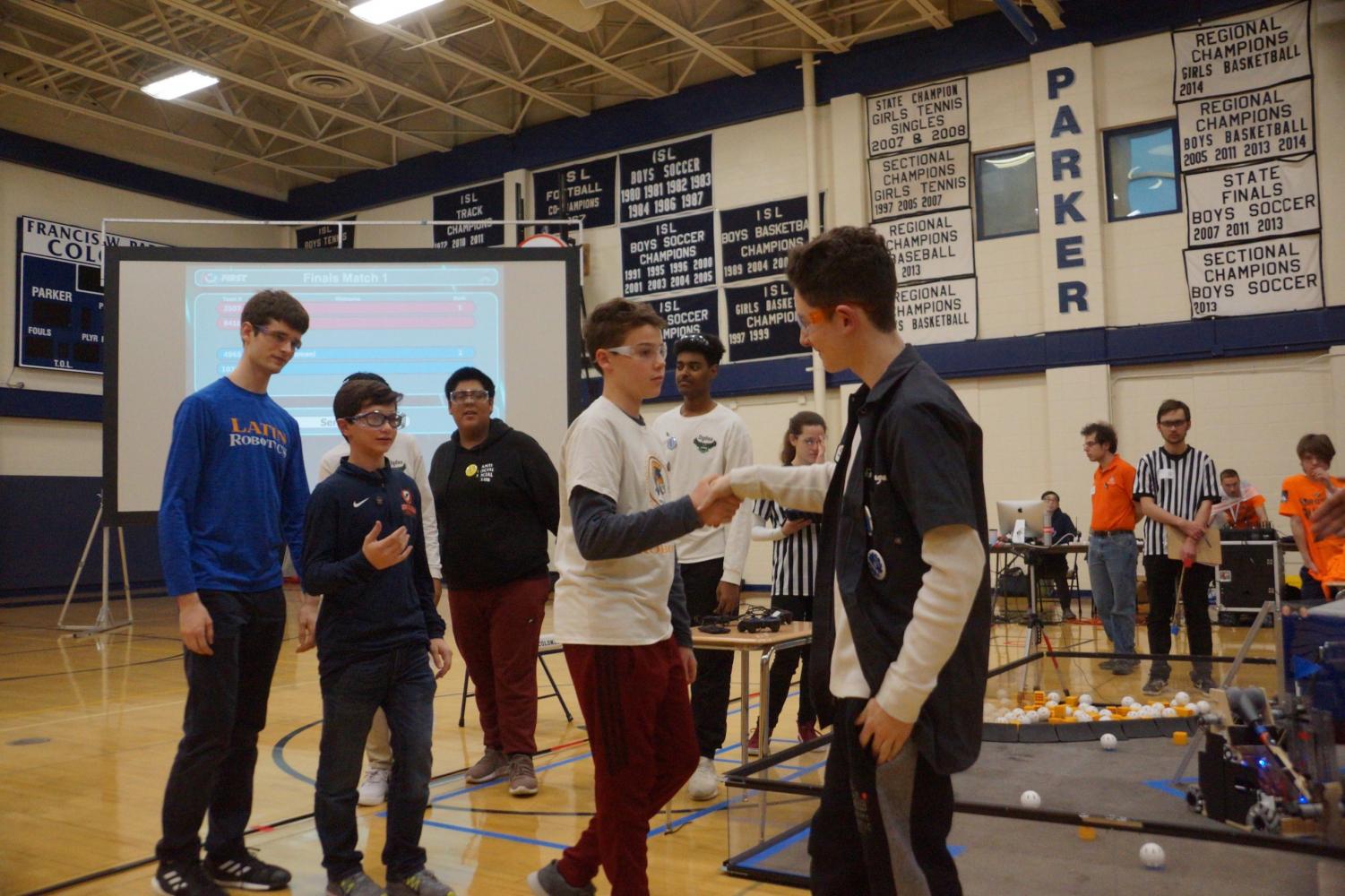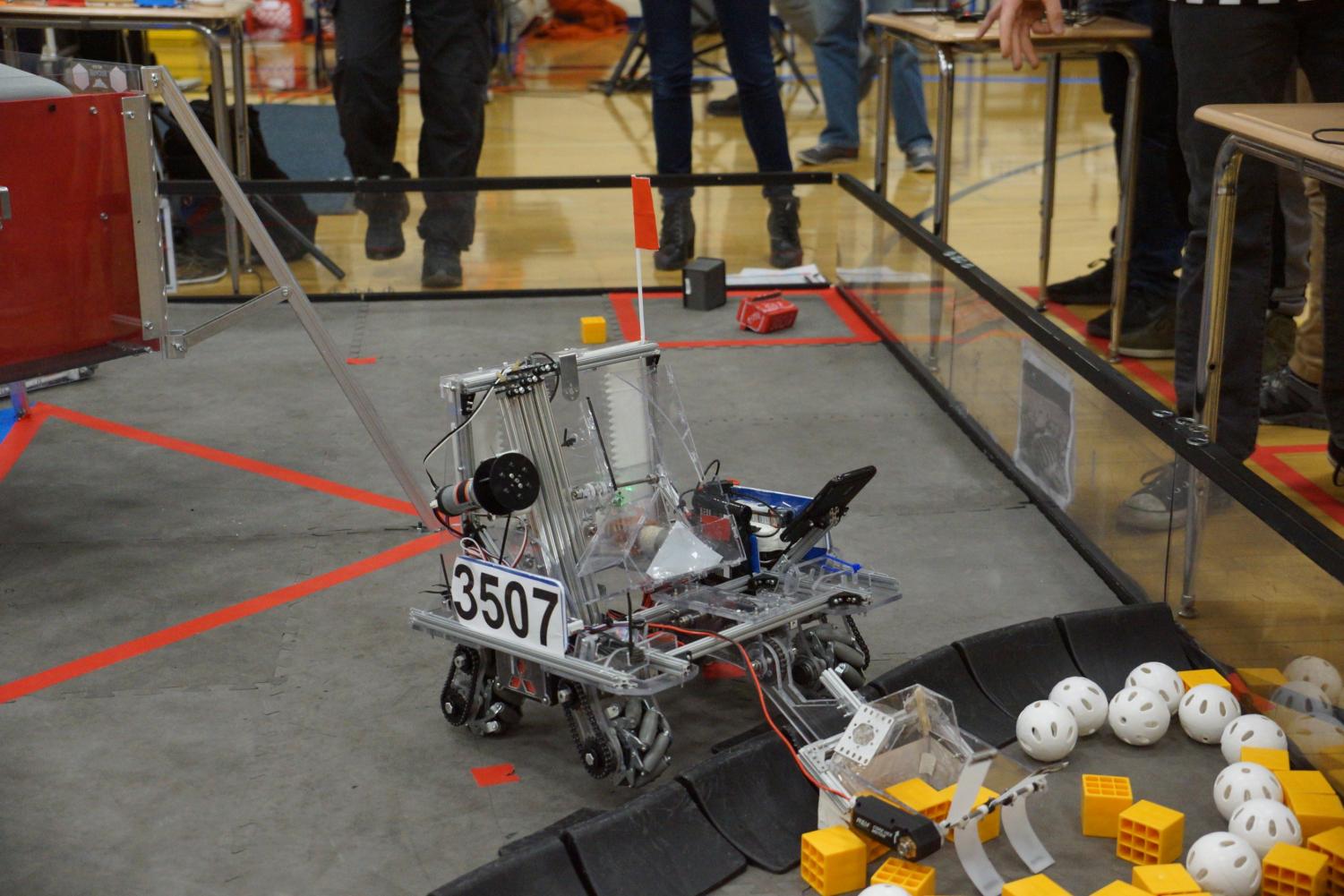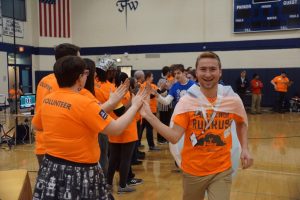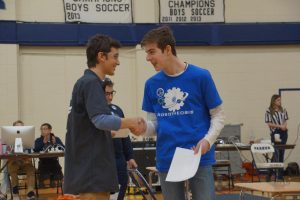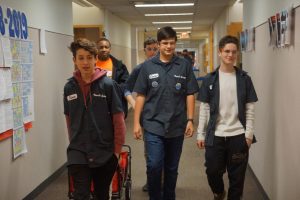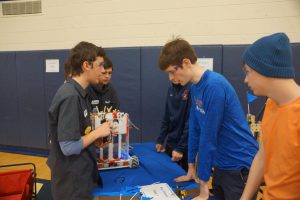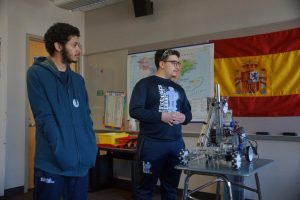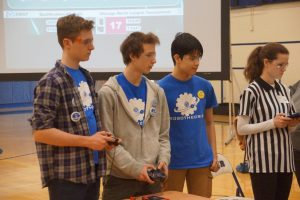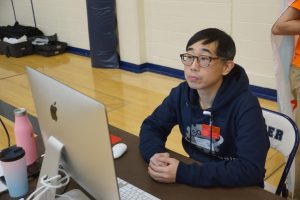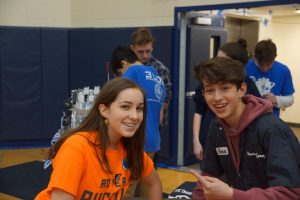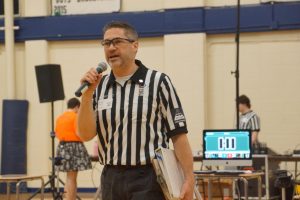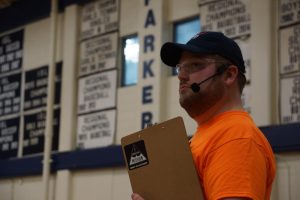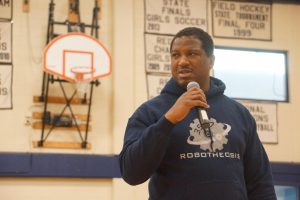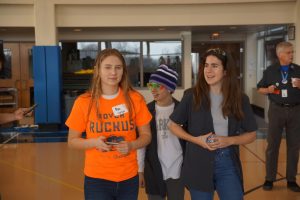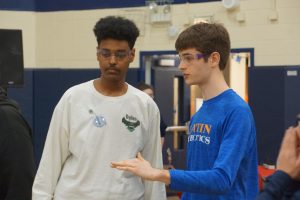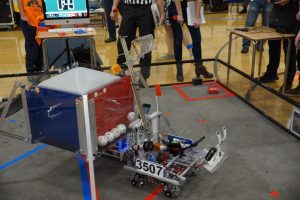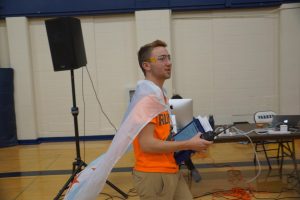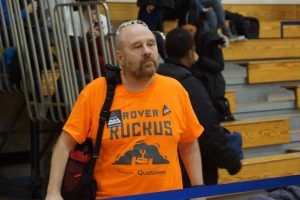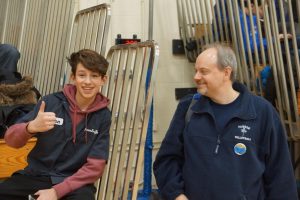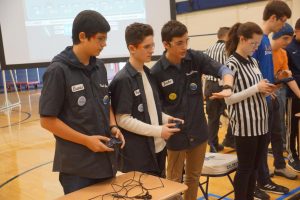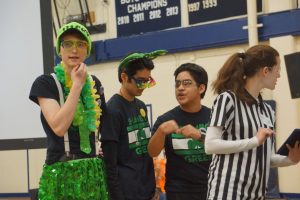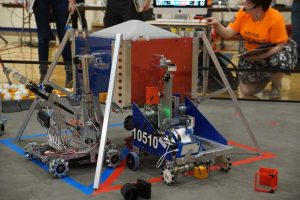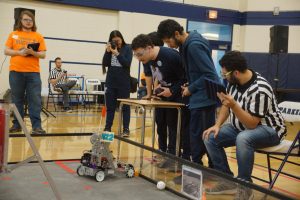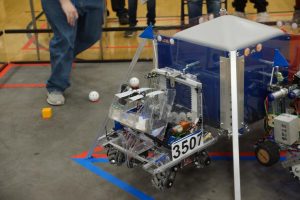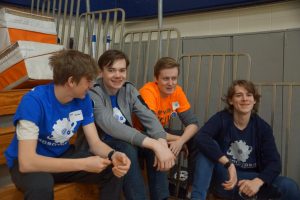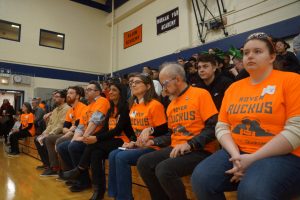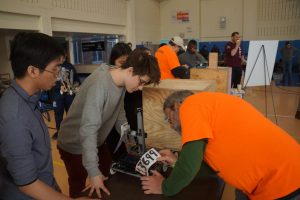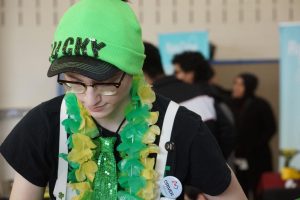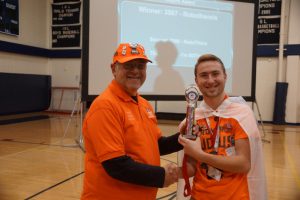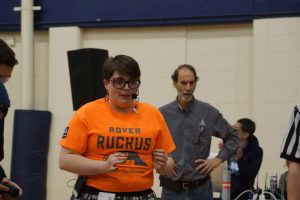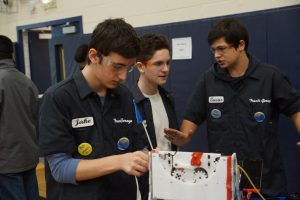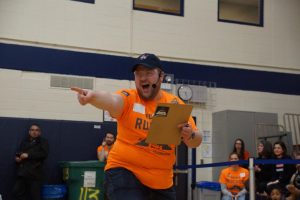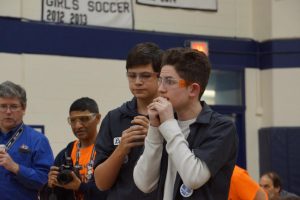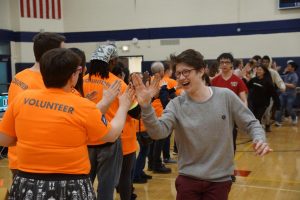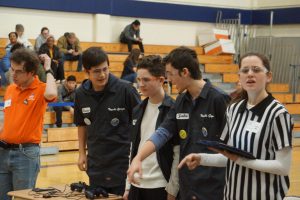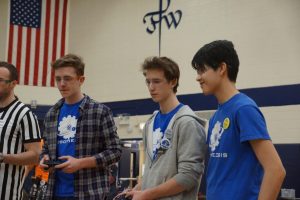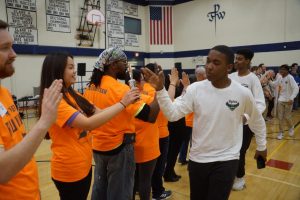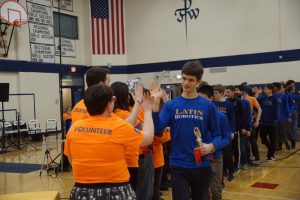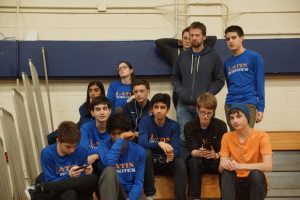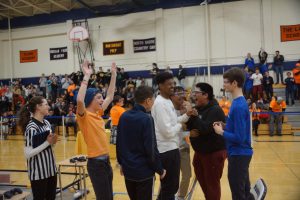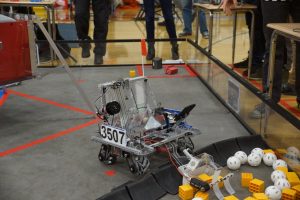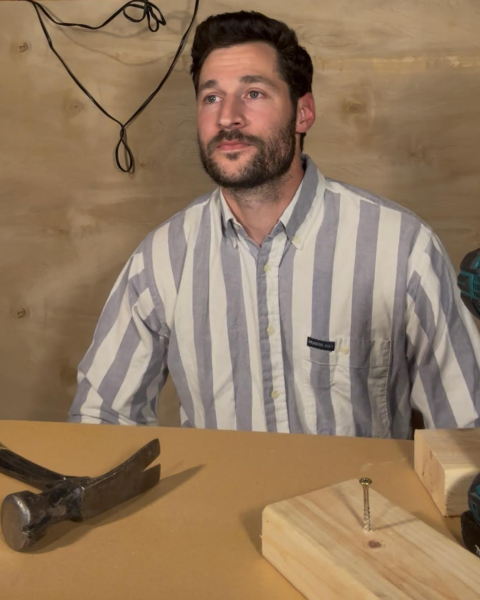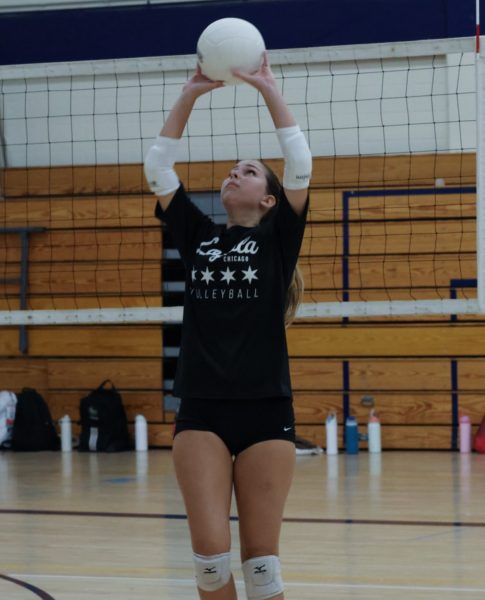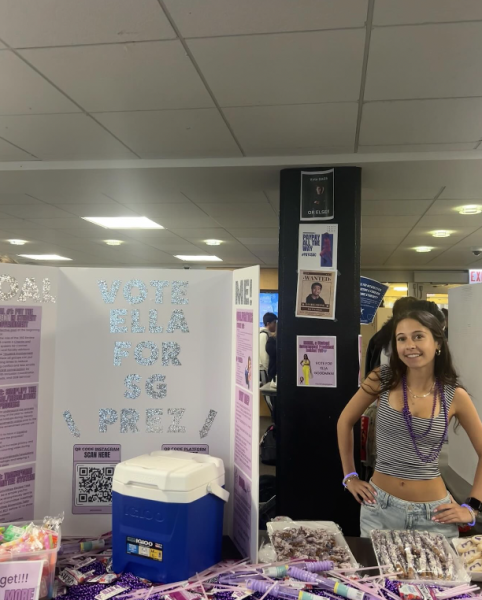Parker Robotics “Inspires” at League Championship
Team Secures Top Award for Third Straight Year
Nathan Satterfield’s bleached blonde tips are bouncing in the Big Gym. With a Chicago flag tied around his neck, the senior’s bright hair serves as a beacon for a swath of volunteers and teammates seeking his advice, guidance, and instruction as they prepare for a day of competition.
On Saturday, February 9, Parker hosted the Chicago North League Championship for FIRST Robotics, a gathering of 19 local teams, which served as the culmination of a six-month season. Four spots to compete in the State Finals sat on the line. Satterfield organized the event, spending months on coordination and outreach.
“We host the event because we can,” Satterfield said. “We have all the tables. We have all the chairs. We have all the resources. It’s our opportunity to give back.”
Robotics coach and Upper School computer science teacher Aaron Lee agrees. “Other schools, they rely on more experienced teams like us,” Lee said. “We help with the event administration and really show them how to do things. Teams in the city look to us for leadership.”
“It’s a great learning experience,” junior Eli Hernandez, co-captain of Louisa May Alcott College Preparatory High School’s “Alcott College Prep Robotics Team,” said. “In our rookie season we’re not going to know everything, so being able to go against teams who have a ton of experience gives us an advantage, allowing us to learn off of them.”
Going into Saturday, the two top-ranked teams in the Chicago North League were both composed of Parker students. “Robotheosis,” Parker’s sophomore, junior, and senior team, sat in first while “Frank’s Garage,” the freshman team, was positioned in a close second.
Carrying robots, snacks, supplies, and homework, teams from across Chicagoland began arriving at 8 a.m., each clad in colorful jerseys. The groups, consisting of anywhere from five to eighteen students, set up shop on folding tables in the Draft Gym as they prepared for a ten-hour day of competition.
Every year, FIRST Robotics designs a different challenge for teams to tackle with their robots. “This year’s challenge is called ‘Rover Ruckus,’” Satterfield said. “It’s a space-themed challenge that basically involves creating robots which can pick up items the size of wiffle balls and place them into an elevated container.”
Before competition can begin, the robots must first pass through two rounds of inspection––one for software and one for hardware. “The idea is to make sure everything is safe and running safe,” Dave Lewandowski, volunteer inspector and Parker parent, said. “There are rules on the size, the weight, the materials, everything that a robot can use. We want to make sure the robots aren’t going to hurt anybody.”
As they’re waiting to pass inspection, teams participate in a “Judge’s Interview.” The interviews, hosted in Parker’s sixth and seventh grade classrooms, involve a panel of three robotics experts questioning team members on matters of organization, fundraising, team inclusivity, and the design process.
“We try to look at how the team works together and how they articulate goals,” event judge Victoria Lewandowski ‘13, said. “I like to know what kind of schedule they have, how many people, and how they balance that.”
At 11 a.m., once each of the nineteen teams had passed inspection and spoken to judges, the roughly 300 students, coaches, and volunteers filed into the Big Gym for the competition’s opening ceremonies. After a welcome speech from Parker’s Upper School Head Justin Brandon, an introduction from Master of Ceremonies Ryan Kamphuis, and a FIRST animation which explained “Rover Ruckus,” the tournament began.
Per FIRST policy, Satterfield randomly generated the day’s competition schedule at the end of the Opening Ceremonies, with each team guaranteed five matches. When a team competes, they’re paired with another team to play as an “alliance,” challenging an additional random partnership. Individual robots score points by completing tasks like picking up elements or driving into given areas. Referees add points from allied robots together, and the higher scoring alliance wins.
Dan Green, the Illinois Executive Director of FIRST Robotics, notes that the “alliance” system is core to FIRST’s philosophy. “FIRST is all about this idea of ‘gracious professionalism,’ about collaborating,” Green said. “There’s the gracious side of it and that has to deal with teamwork…it has to do with working together, and it has to do with sportsmanship. There’s also the professional side, which is the technical side of it, and that’s about what’s involved in actually building a robot…we like to bring those together.”
The day’s first matchup featured an alliance of Wolcott School’s “Bionic Wolves” and Parker’s Robotheosis against The Ogden International School of Chicago’s “Red Hot” and Intrinsic Charter High School’s “Intrinsic Schools Belmont Campus.”
Where most teams have upwards of a dozen students working on their robots, only three participate in the actual competition. A pair of students serve as “drivers,” controlling the robot, while a third acts as a “coach,” advising the drivers on strategy. In addition to aiding their respective teammates, the alliance’s two coaches work to coordinate between groups, ensuring that partner robots assist one another. Each match lasts two and a half minutes.
“It’s really stressful and exciting to be competing,” sophomore Takato Muro, a Robotheosis coach, said. “You have so many people working on the robot for so long and then it’s up to you to do well. It definitely feels like a sport in a way.”
Drivers steer the robot with a controller resembling that of an Xbox. “It feels like you’re playing a video game,” freshman Ryder Selikow, a driver for Frank’s Garage, said.
Freshman Lucas Garcia-Sjogrim, the team’s other driver, agreed. “It always feels like you’re a little bit under pressure,” he said. “You’ve worked so much…you have so much practice for the one game you have to play to qualify and you know that if you make one mistake…it could just disqualify you.”
Over the next four hours, 23 exhibition matches took place in Parker’s Big Gym. Each contest was broadcast on Twitch.tv, a popular streaming website, with an additional in-person audience of anywhere between 50 and 100 spectators. Kamphuis, along with his co-host Kori Bowns, a science teacher at Argo Community High School in Summit, Illinois, provided live commentary as “game announcers.”
“As a science teacher, I do a lot of talking in my normal life and I like explaining science and technology, so it transitioned really easily,” Bowns said. “It’s really cool to see kids engaging, and it’s really incredible to see what some of these kids do in terms of how they impact their communities and impact their schools. They also build really cool robots.”
James Santucci, an engineering physicist at Fermi National Accelerator Laboratory, acted as the event’s head referee and shared Bowns’s sentiments. “I hope the kids are learning teamwork and how to come across problems and solve them without getting discouraged,” he said. “Everybody here is our future, they’re America’s future, and trying to enable that future anyway we can, the best way we can, that helps us all.”
After the exhibition matches came to a close, the tournament moved into its “elimination” rounds. The League’s top four teams were each granted the opportunity to pick partners for a four-alliance playoff.
Picking first as a result of their top seeding, sophomore Benji Gourdji of Robotheosis invited Frank’s Garage, the third ranked team, to serve as an ally. Representing Frank’s Garage, freshman Jacob Boxerman graciously accepted Gourdji’s offer.
The second-ranked alliance joined The Latin School of Chicago’s “Animatores Romani” with Red Hot. Alliance three consisted of Alcott College Prep Robotics Team and St. Patrick High School’s “ShamBot Gold,” and the final playoff pair saw a partnership between Bionic Wolves and Chicago Waldorf School’s “GnomeBots.”
“We’re kind of nervous but kind of confident in our ability to do well,” said Animatores Romani member and Latin junior Amir Darbar. “We looked at the results and I think we’re good.”
After notching a season-high 326 points in the second game of the best-of-three semi-finals, Parker’s alliance advanced to face a team of Latin and Ogden for the championship.
Going into the finals, sophomore Tessa Samuels of Robotheosis was confident. “I feel very excited,” Samuels said. “Doing so well really shows that we can win if we try.”
Green categorized the atmosphere as “electric.” “Sometimes the energy is so high that it just gets really great,” Green said. “It is exciting and the excitement of the students is contagious.”
After finding success in the first match of the finals, both of Parker’s teams faced mechanical difficulties in the second game, sending the league championship to a tie-breaker. Parker was unable to hang on in the last match, falling to the Latin-Ogden alliance by a score of 270–282.
Despite their loss, Satterfield is proud of the way Parker performed in the awards ceremonies. “We won the ‘Inspire’ award, FIRST’s award for the best team, for the third year in a row,” Satterfield said. “So even though we didn’t win, that’s really what I wanted for our team.”
At the closing ceremony, judges announced that Robotheosis had qualified for the State Finals, joining a cohort of Animatores Romani, Red Hot, and Chicago Math and Science Academy’s “RoboTitans.” Due to the Parker alliance’s loss, Frank’s Garage failed to secure an automatic berth and did not advance.
Satterfield foresees a bright future for Parker robotics. “In the end, success breeds itself,” Satterfield said. “We’ve got really great things ahead. Students at Parker see how well the robotics team does and that’s been really driving people to be interested. We want success and we want to make sure everybody who wants to learn robotics has the opportunity.”
